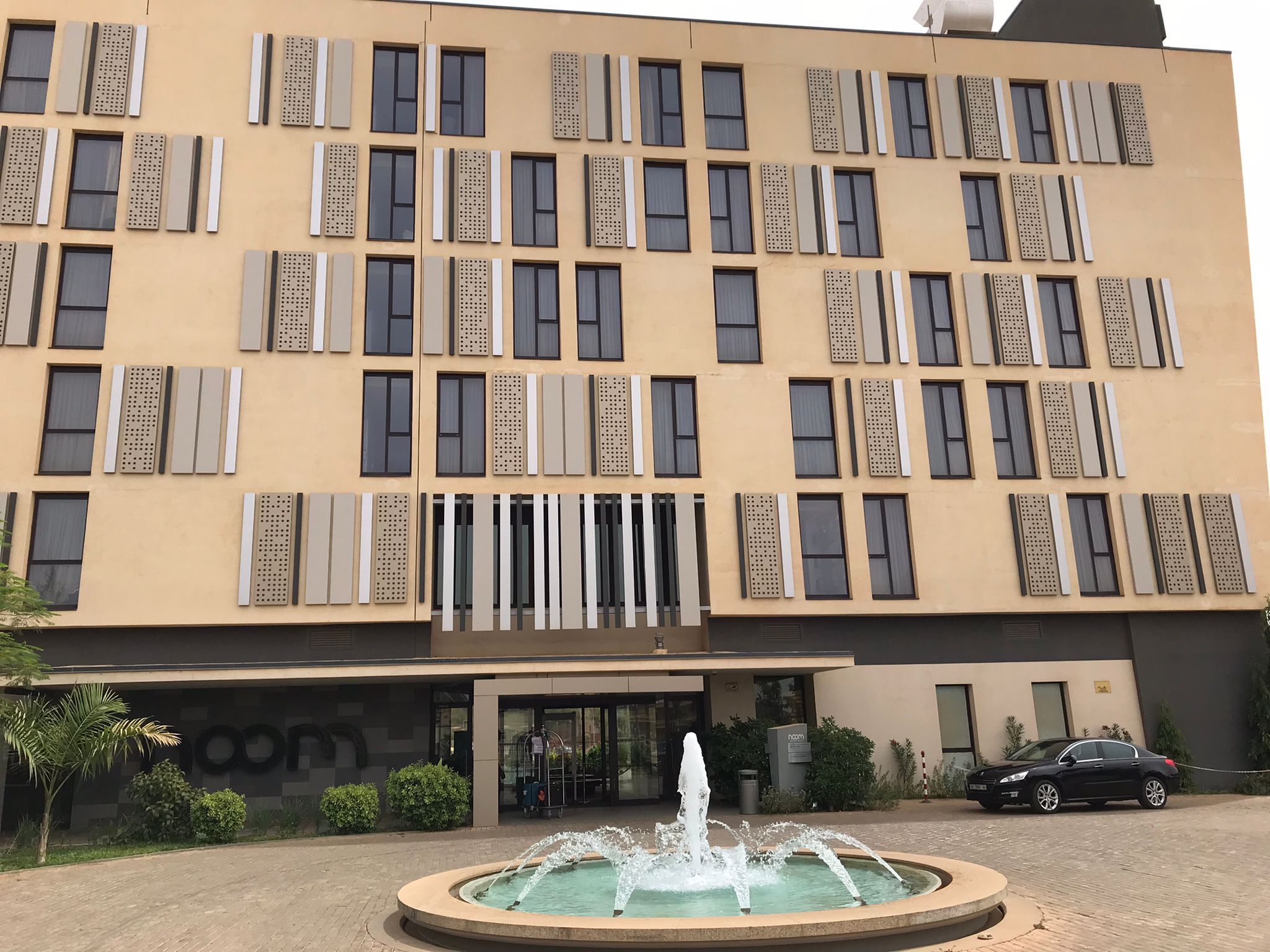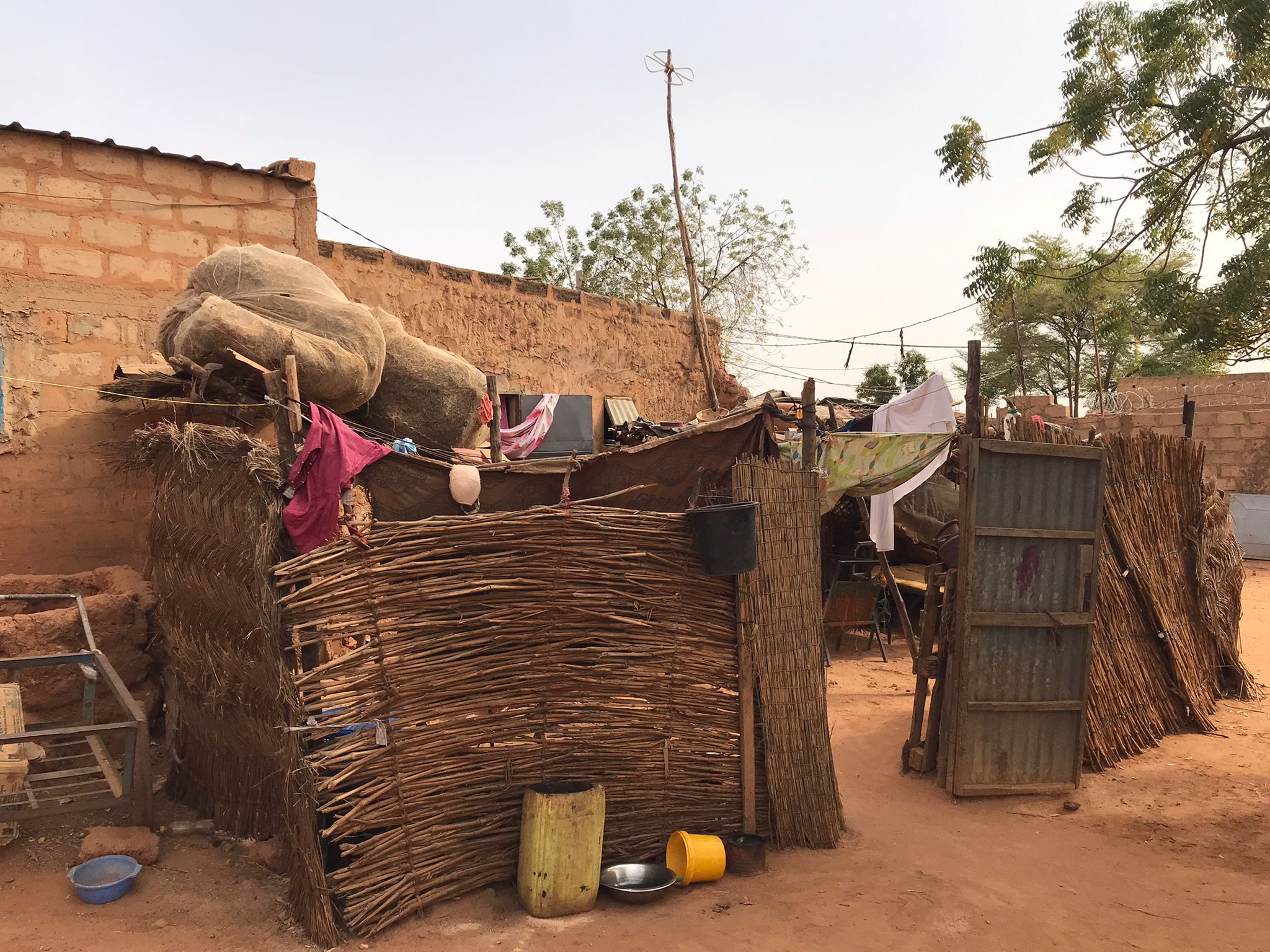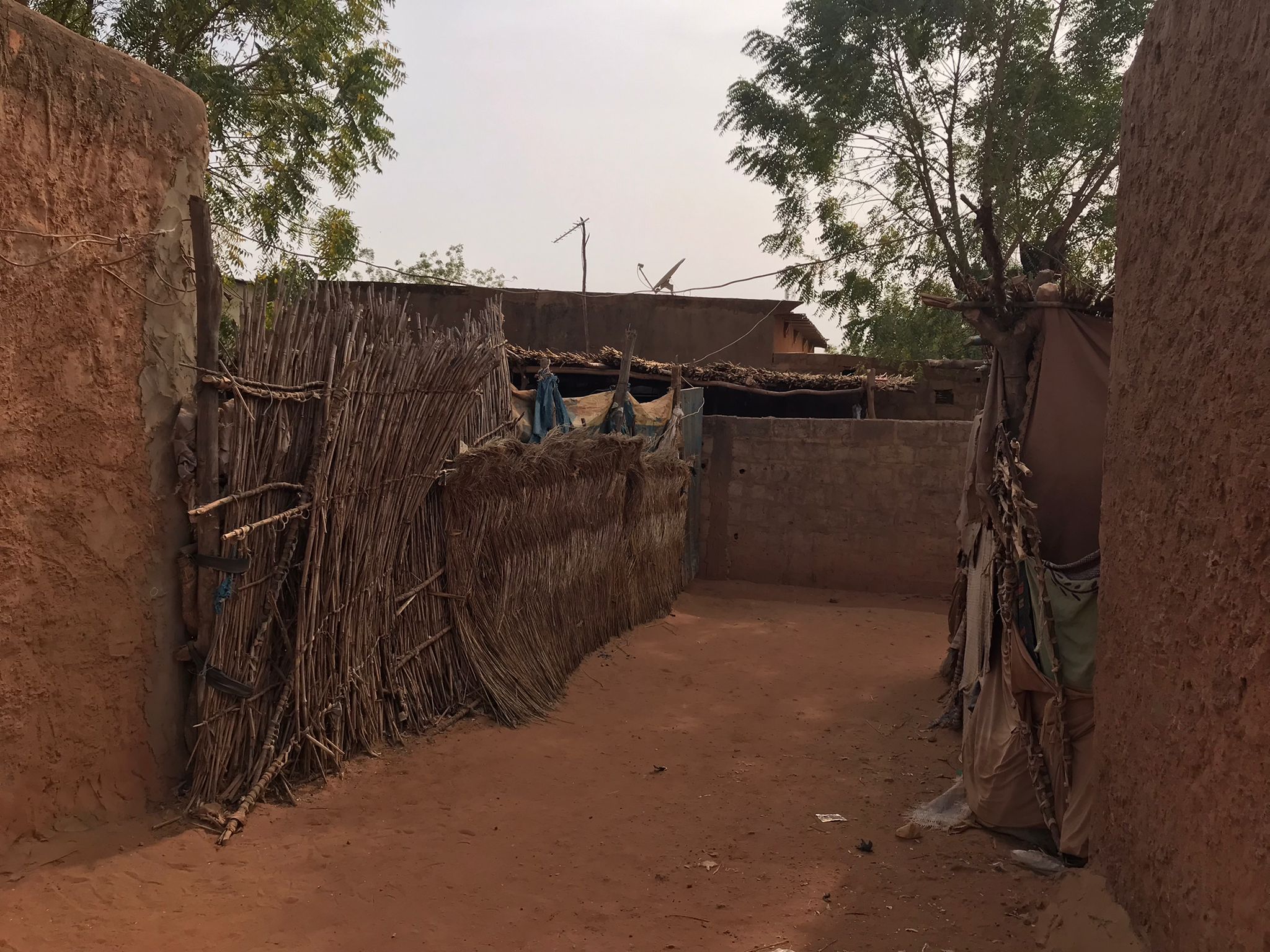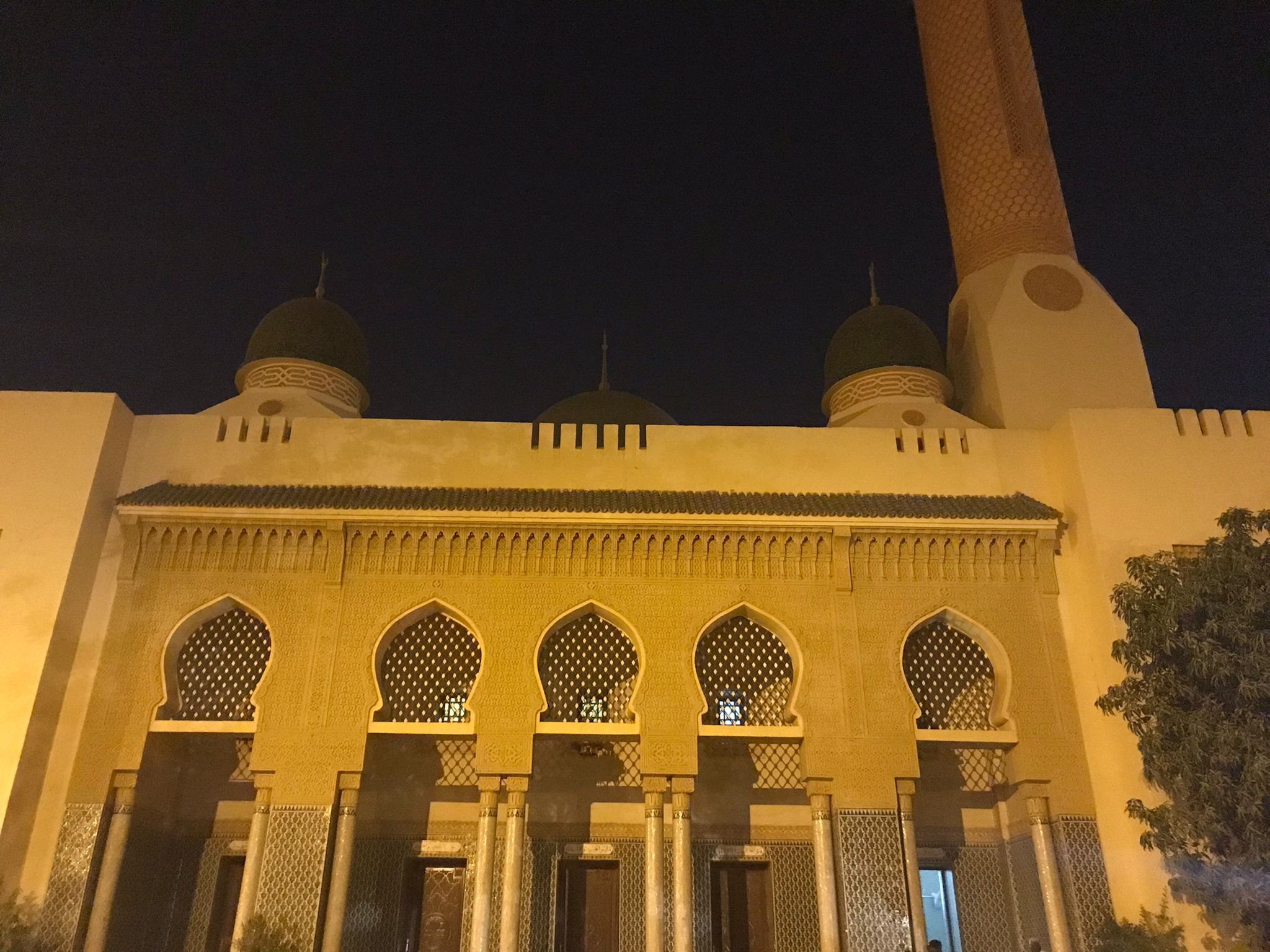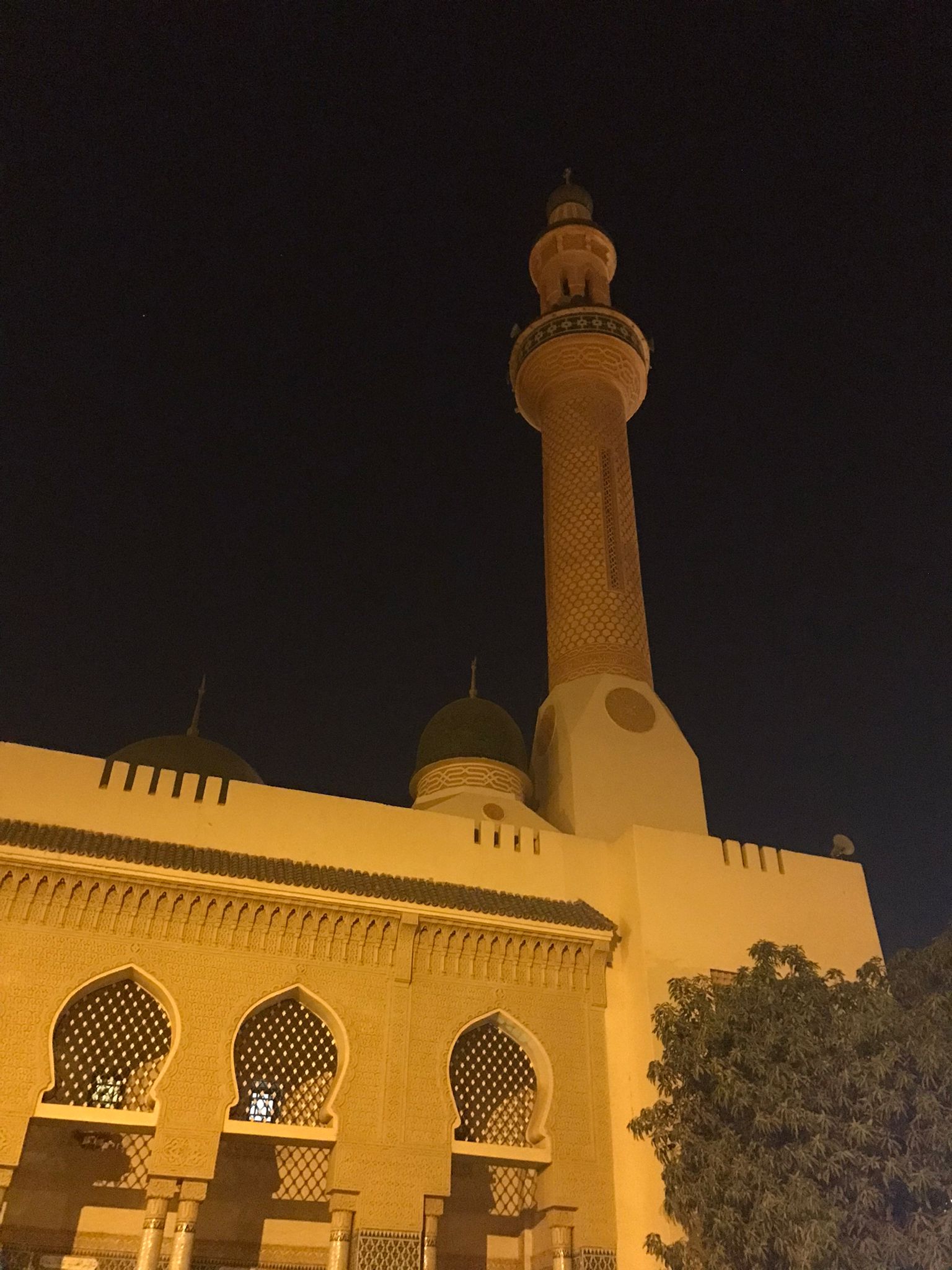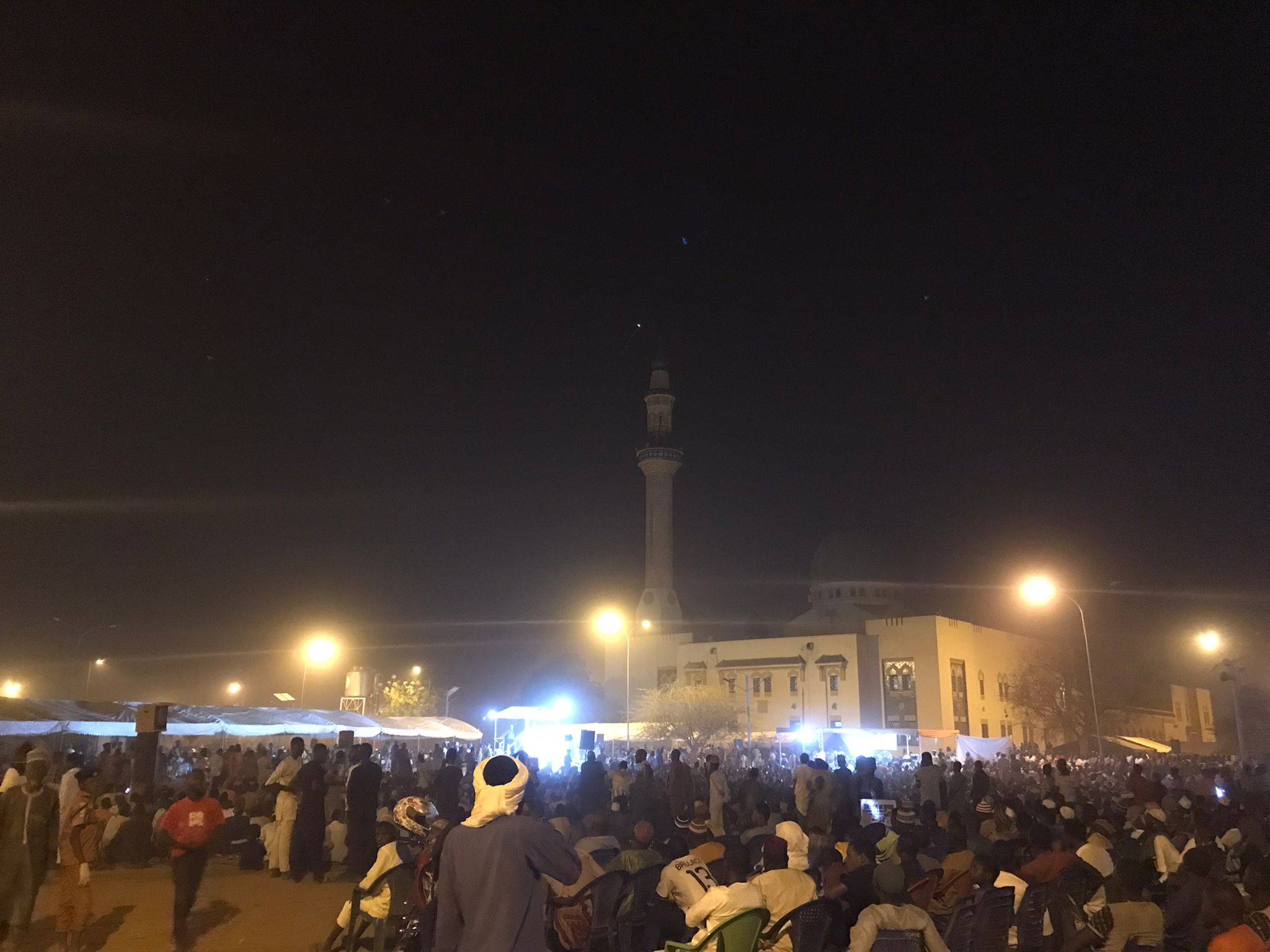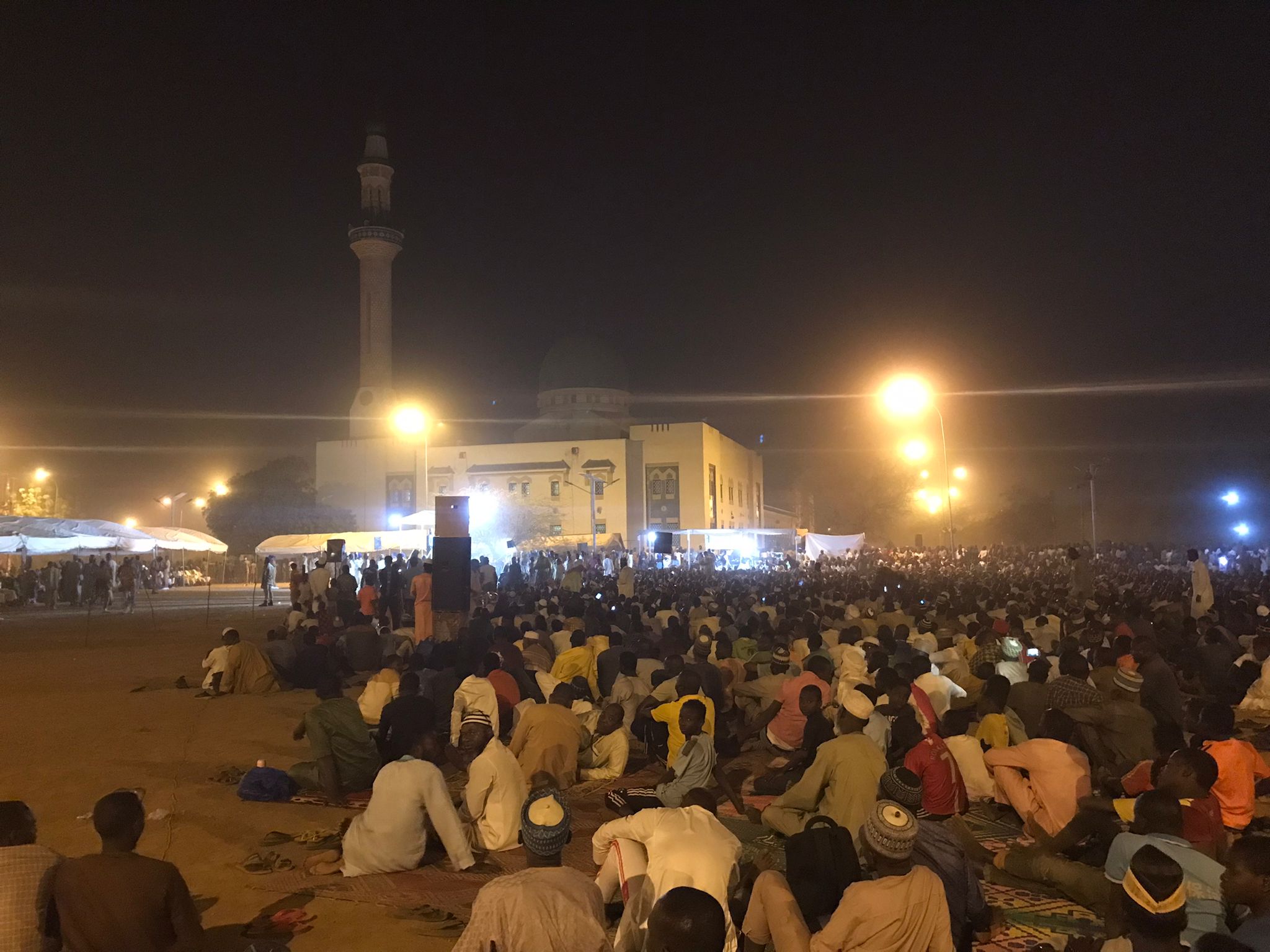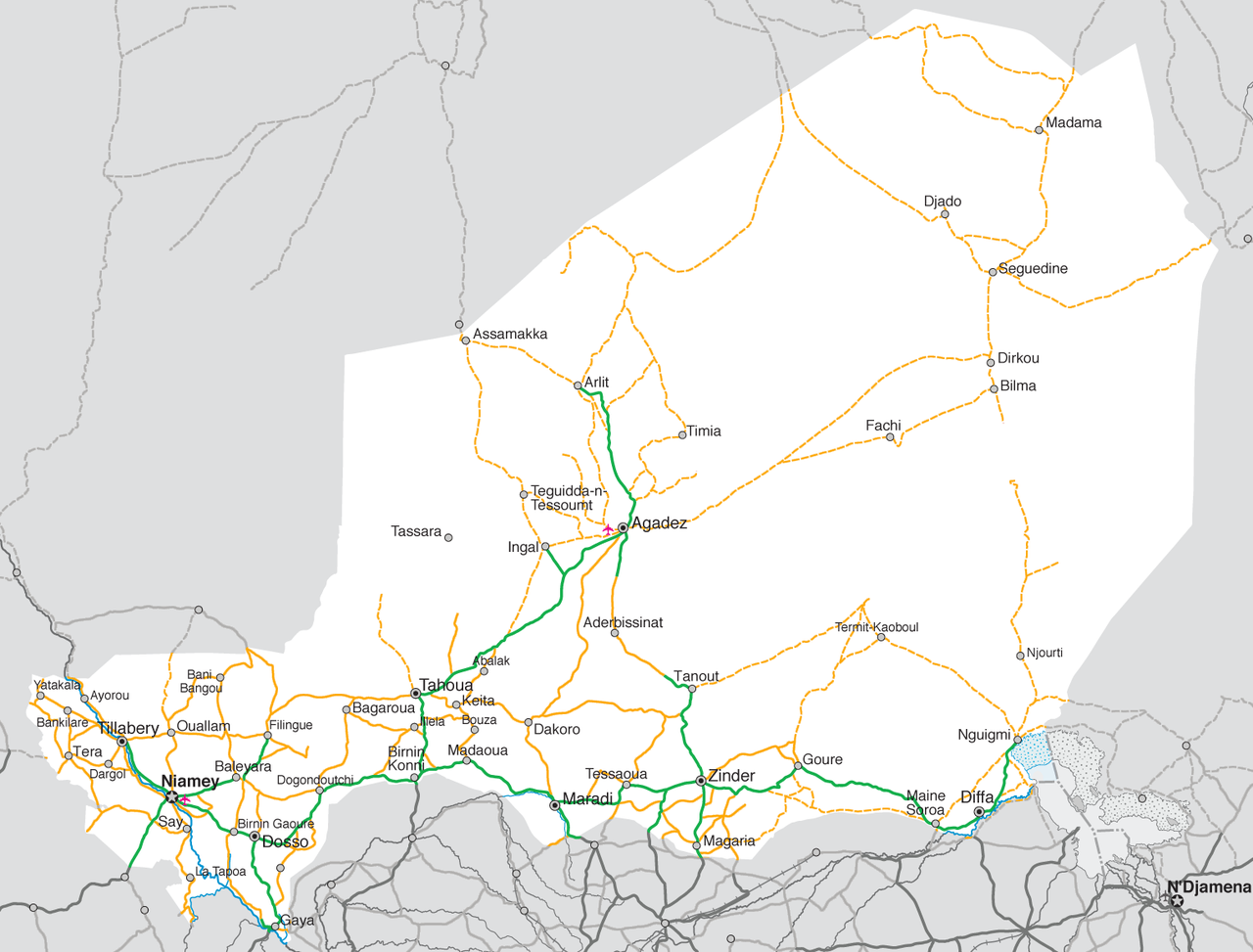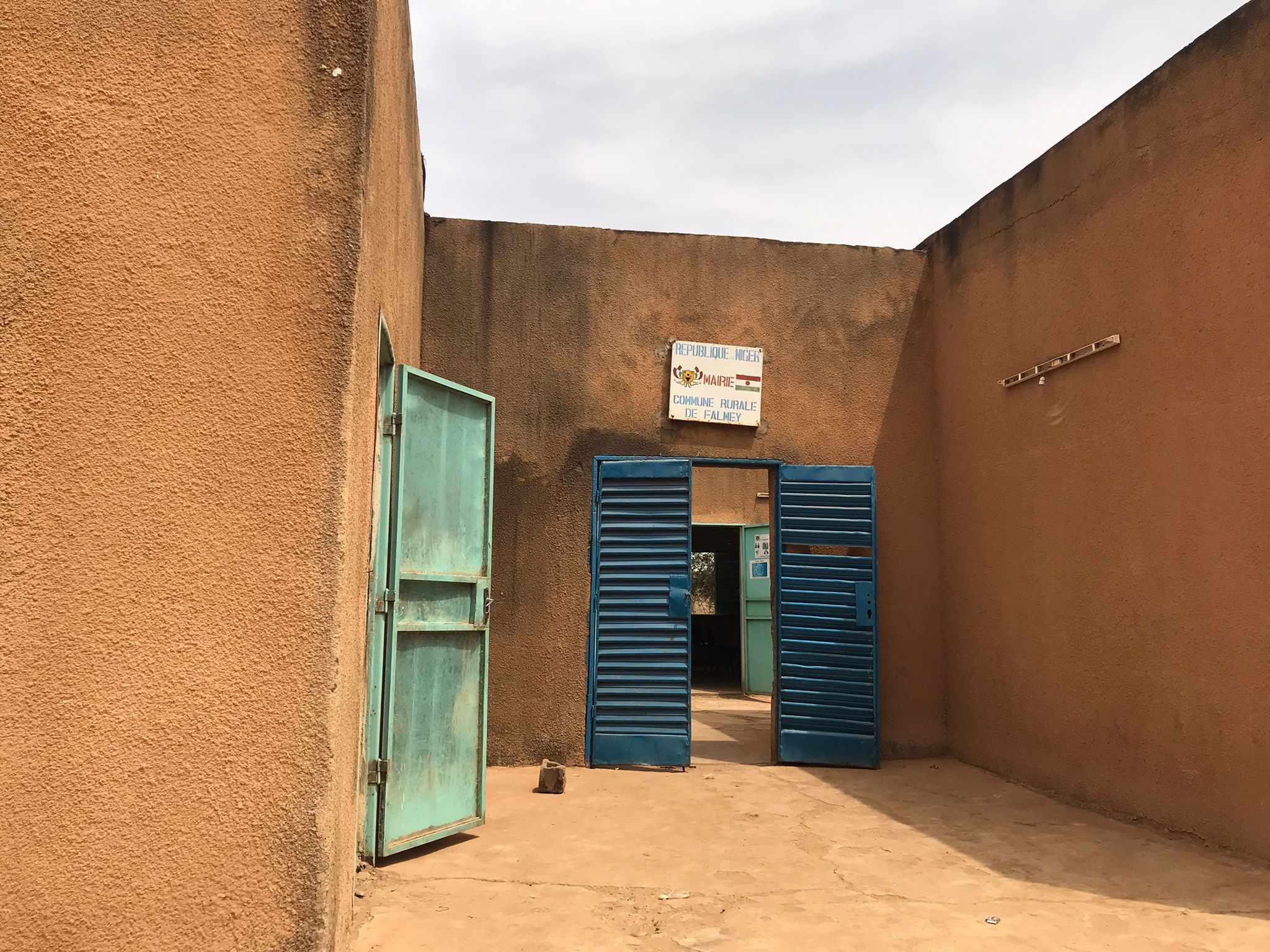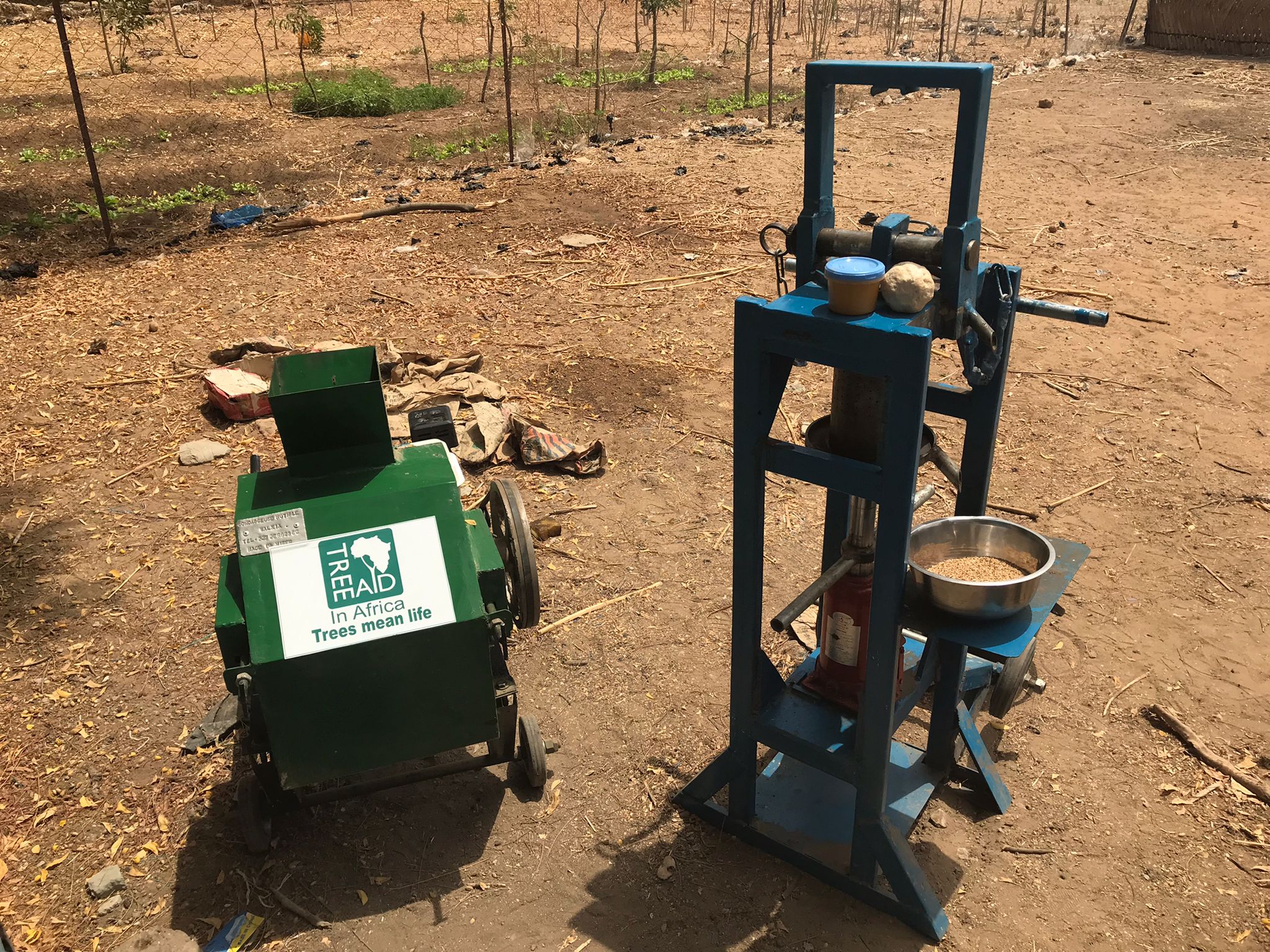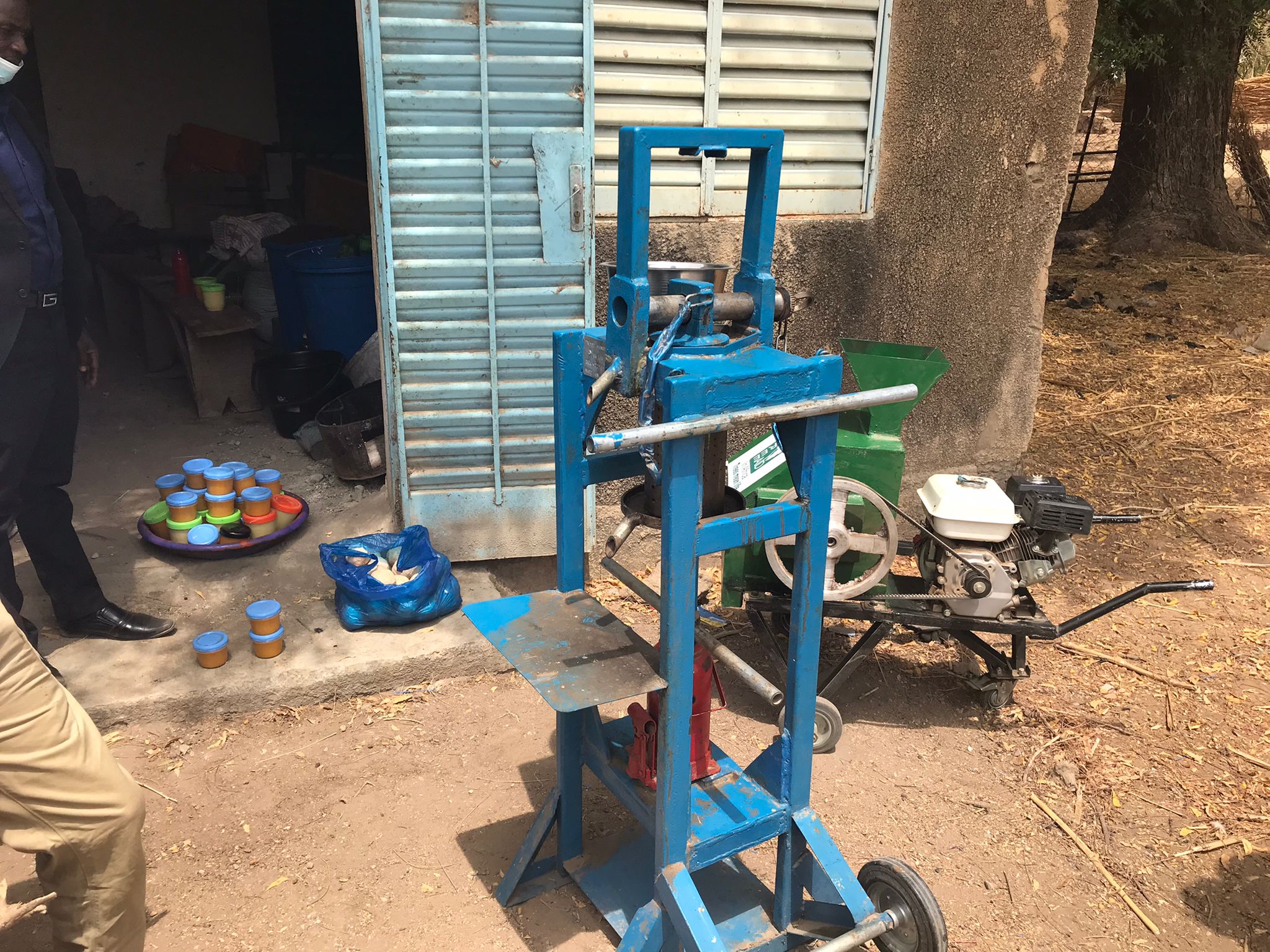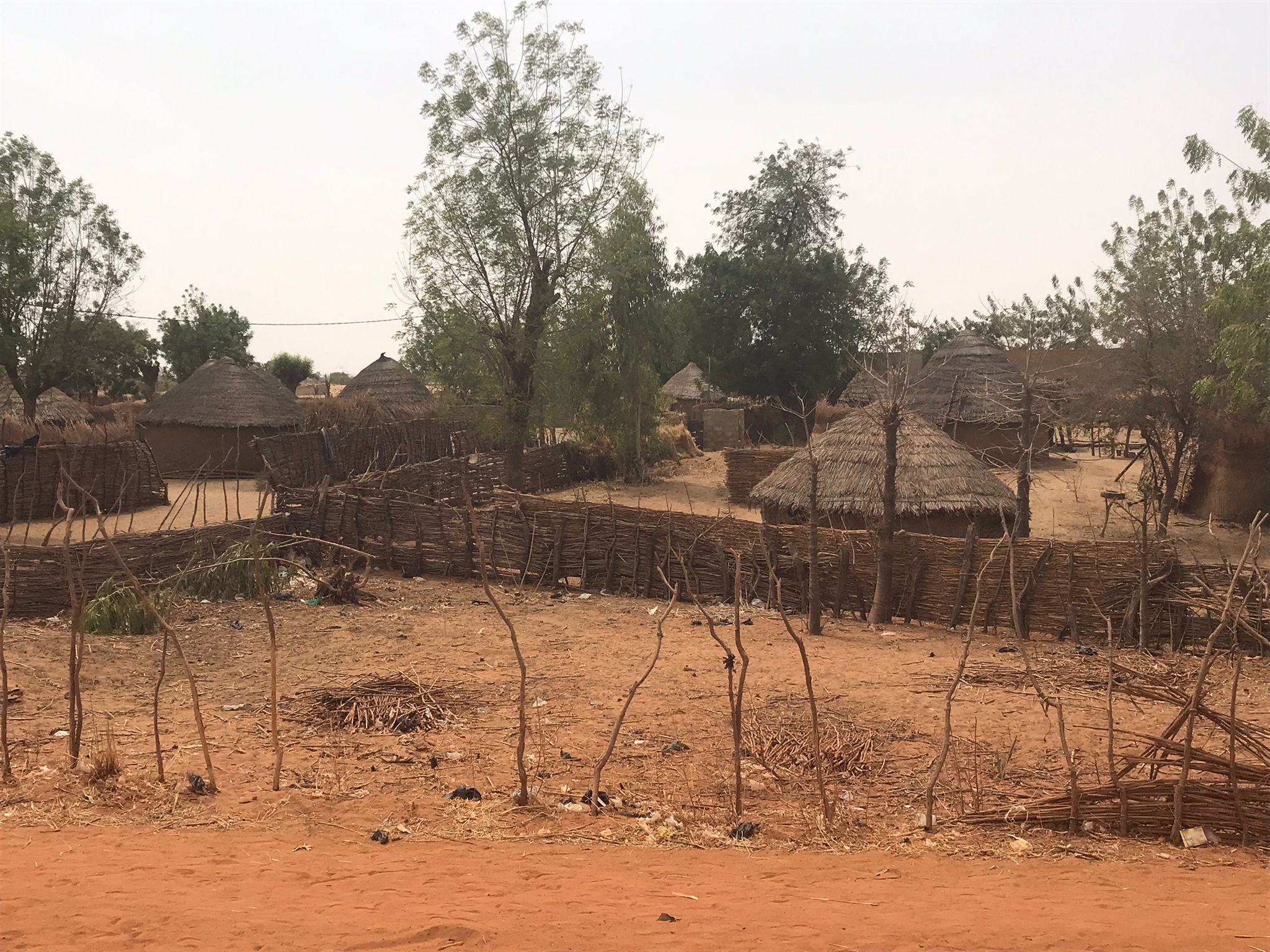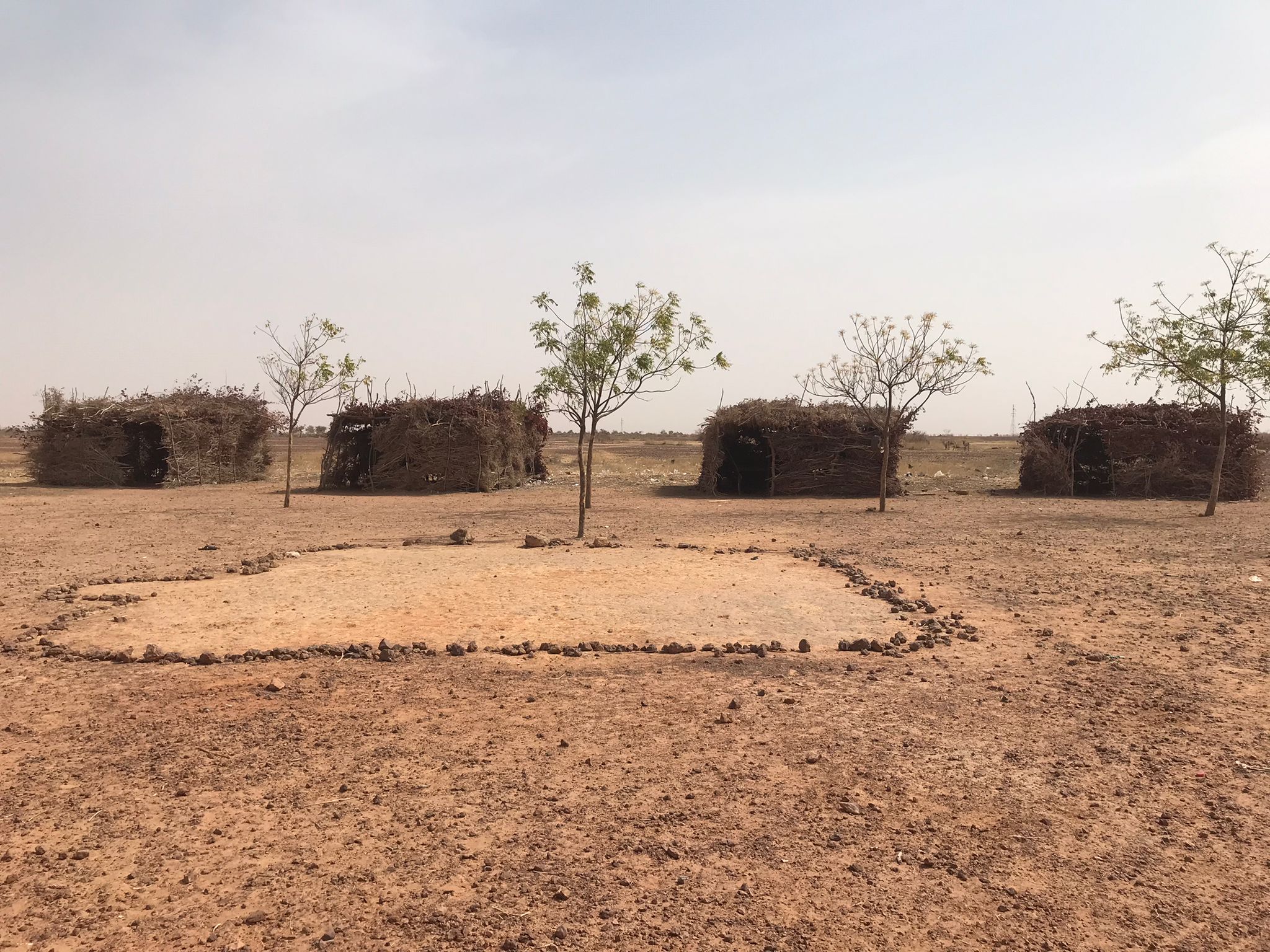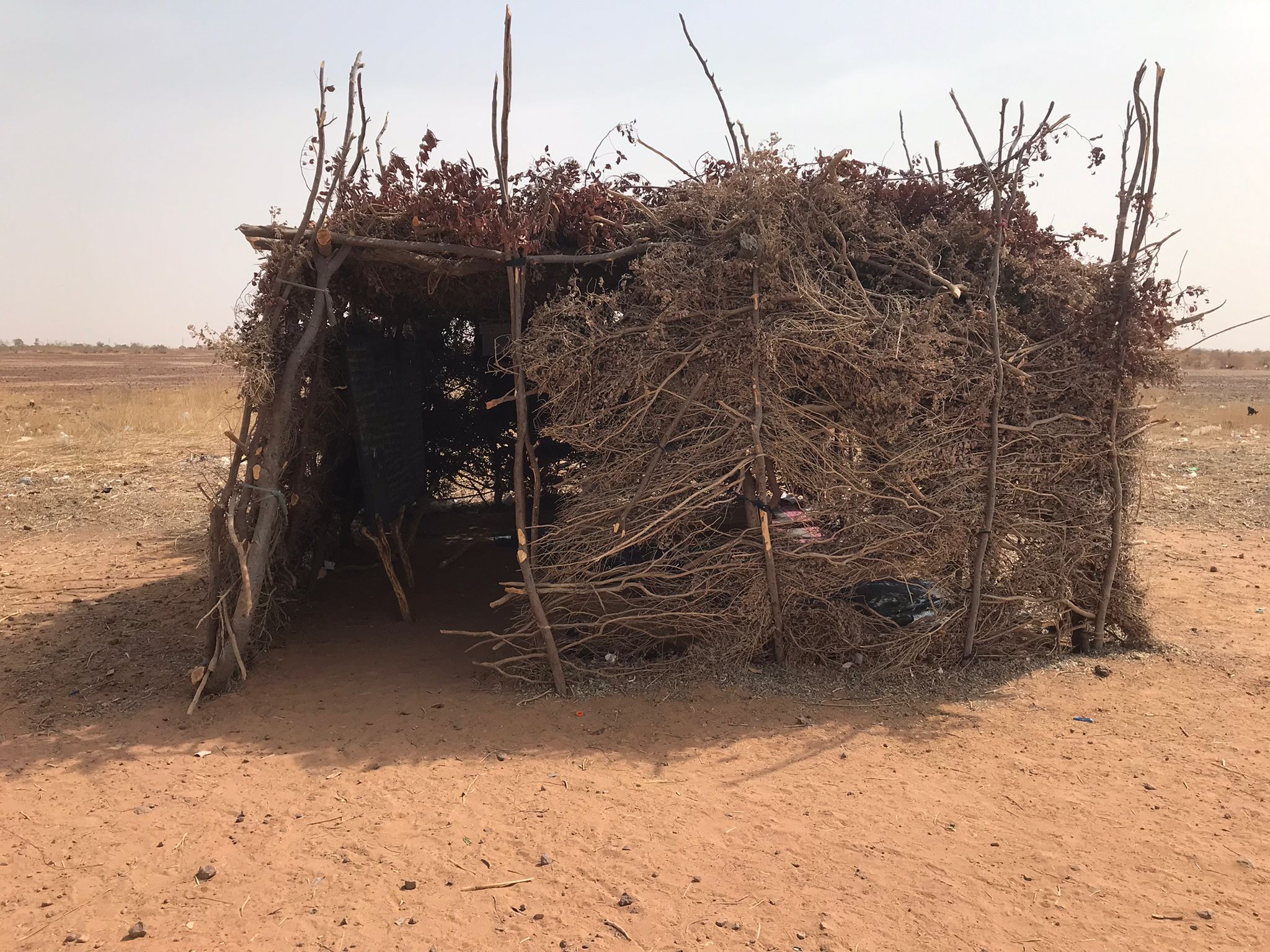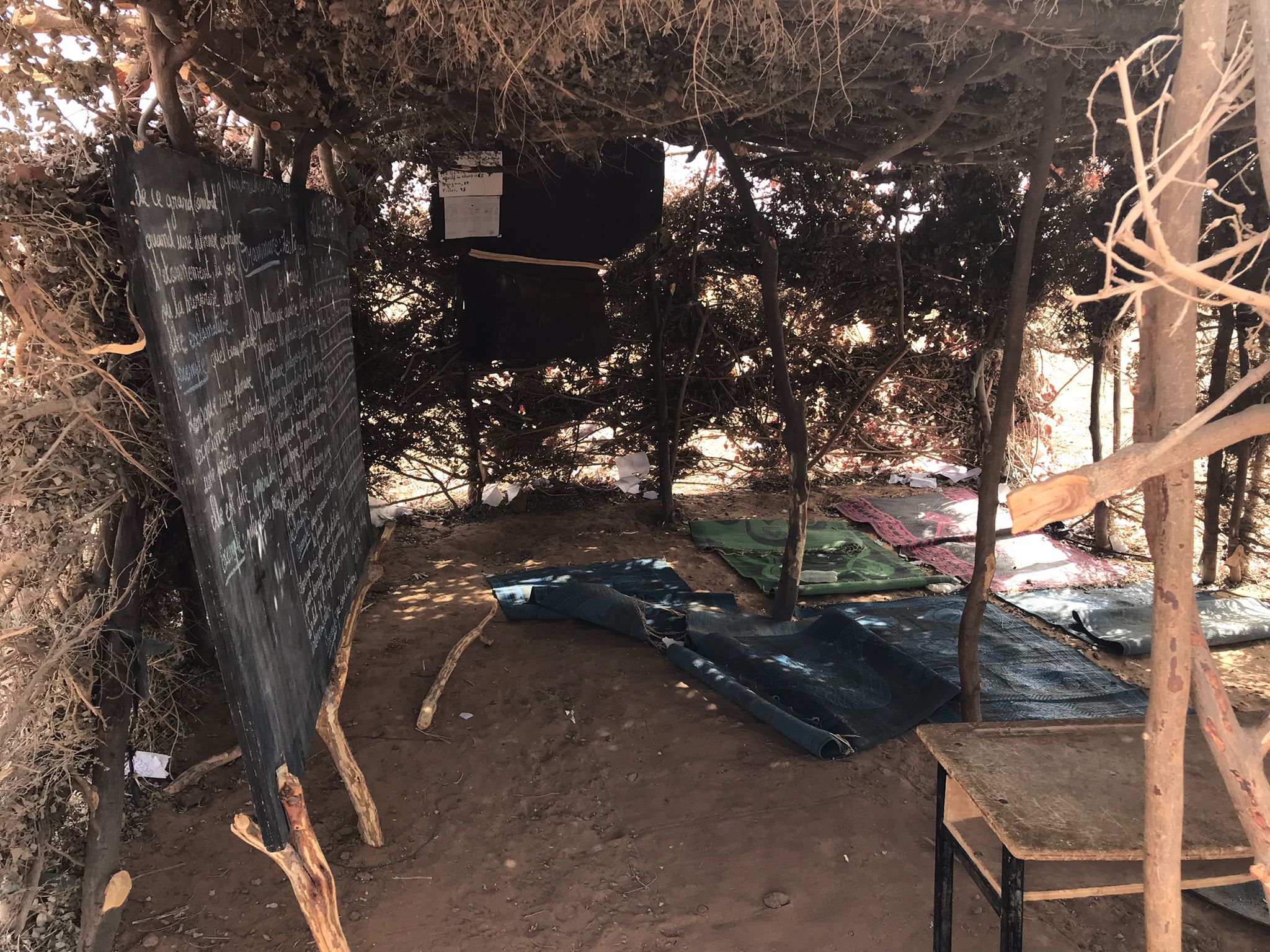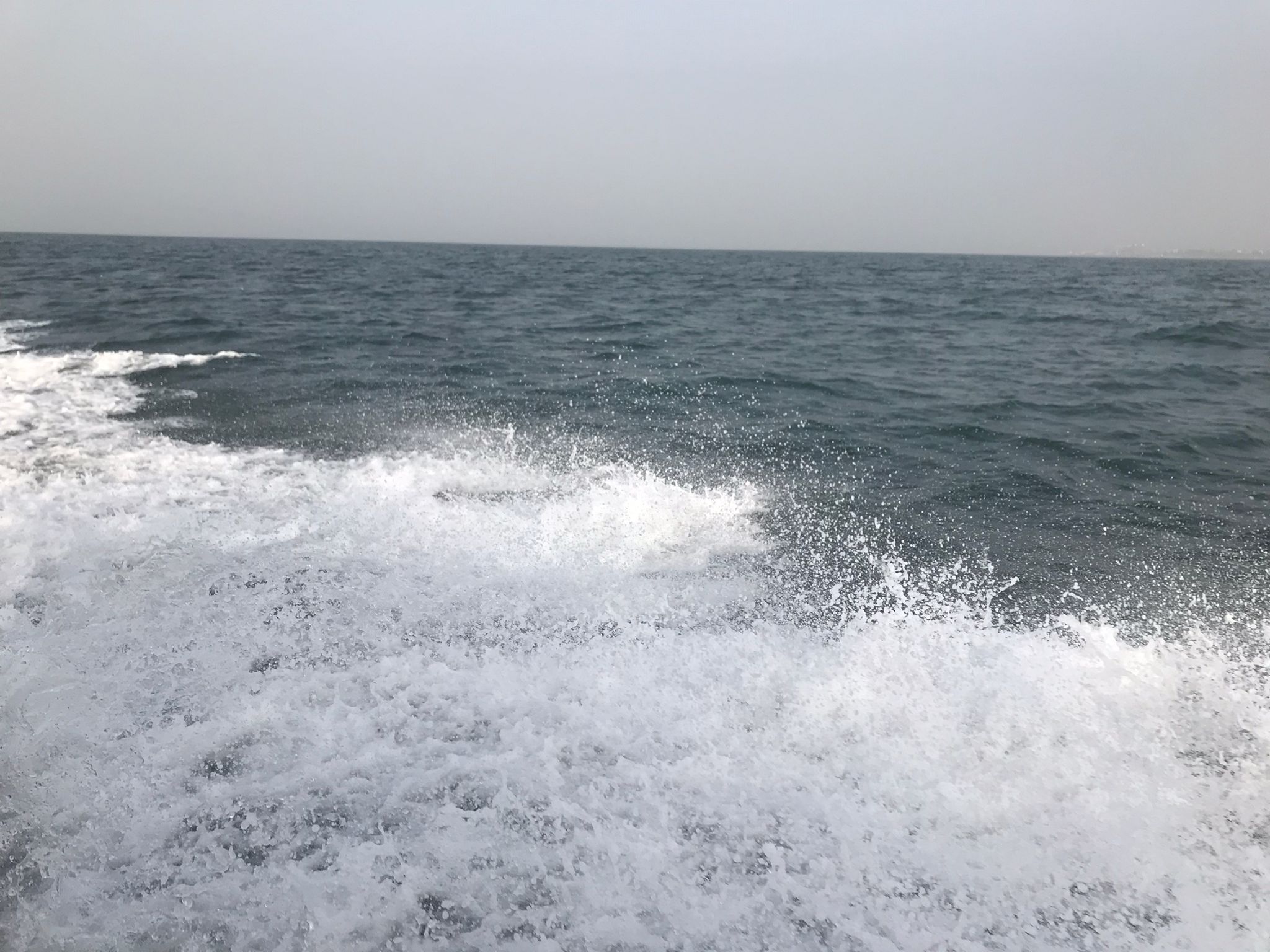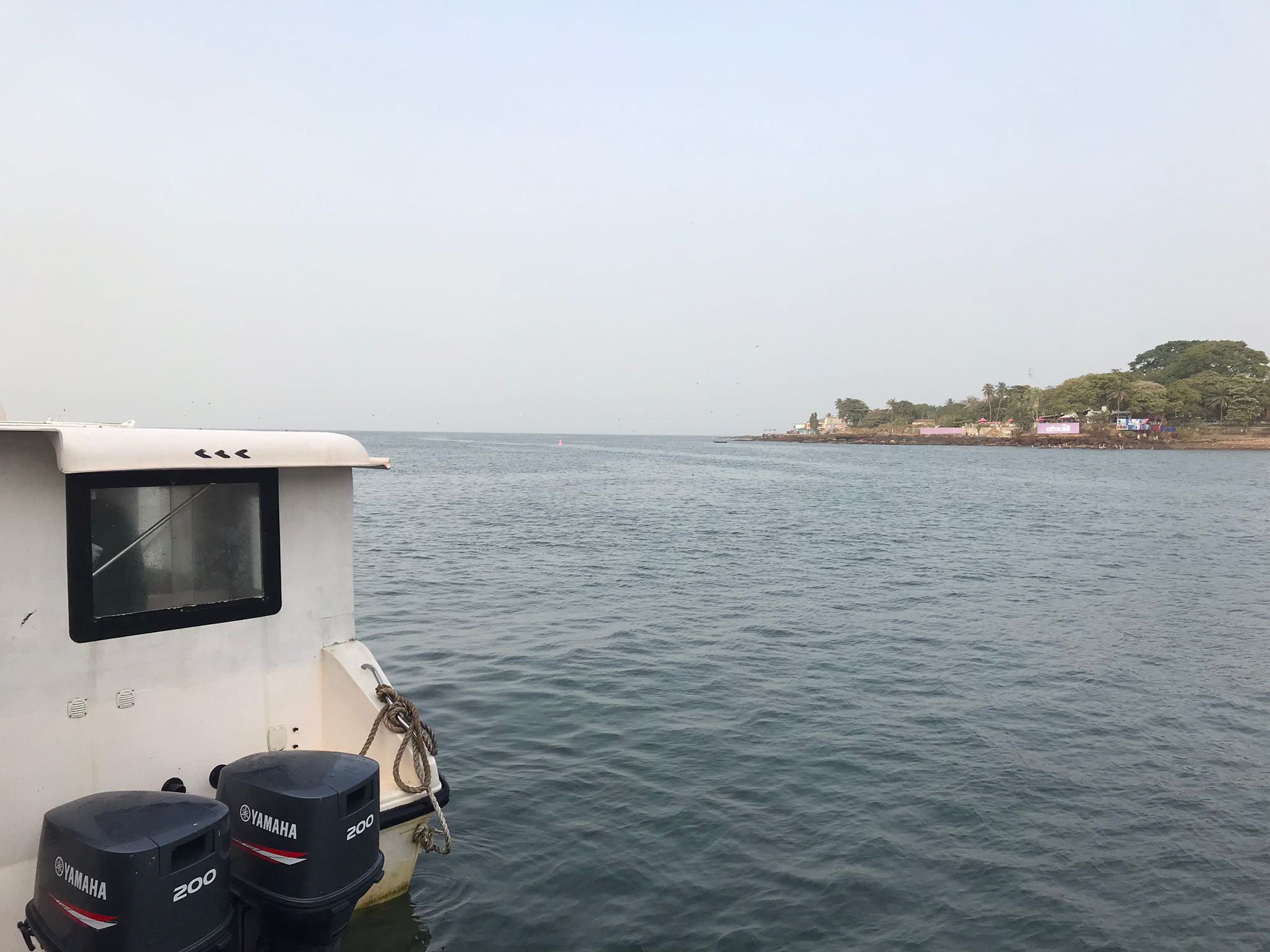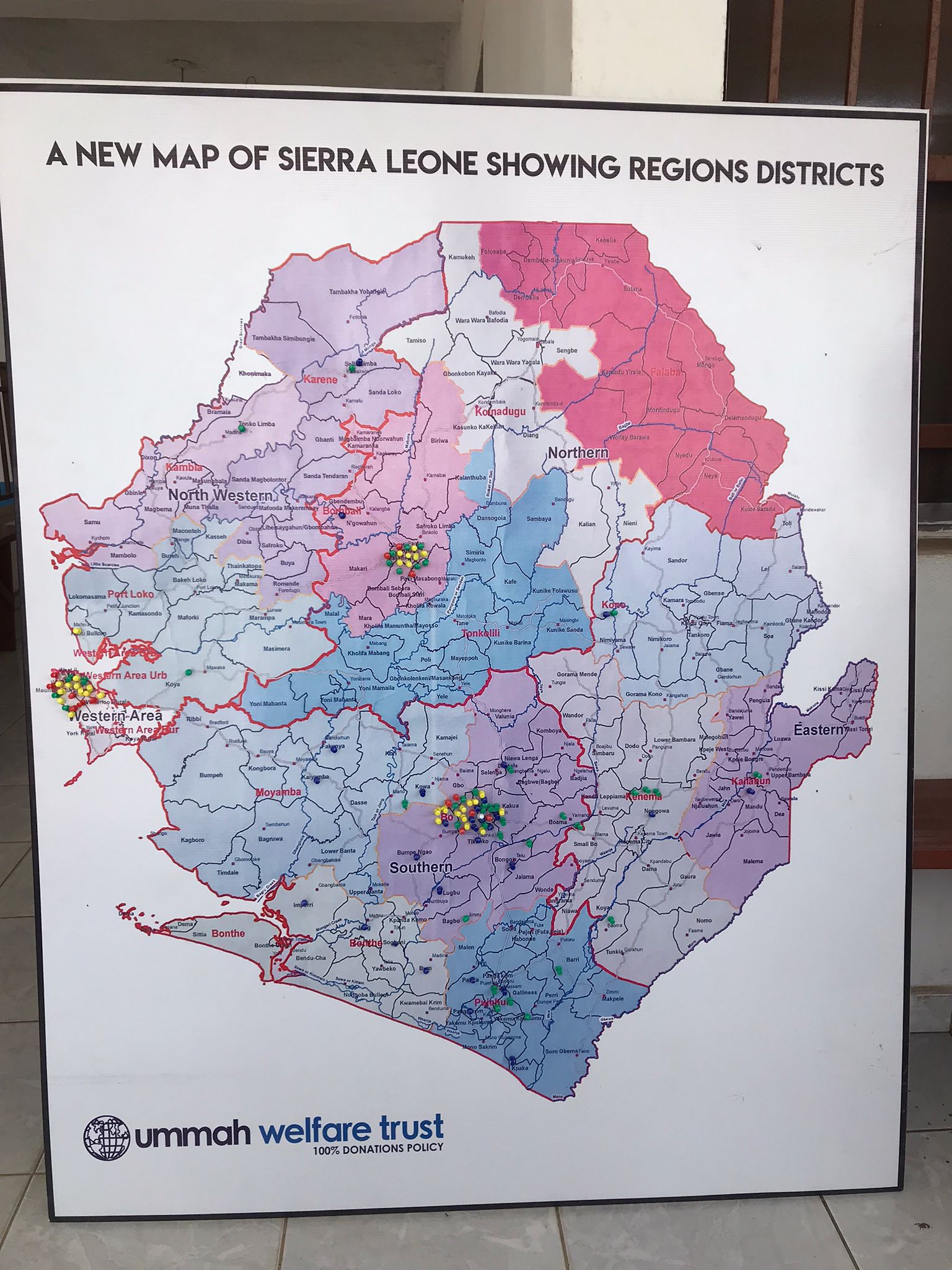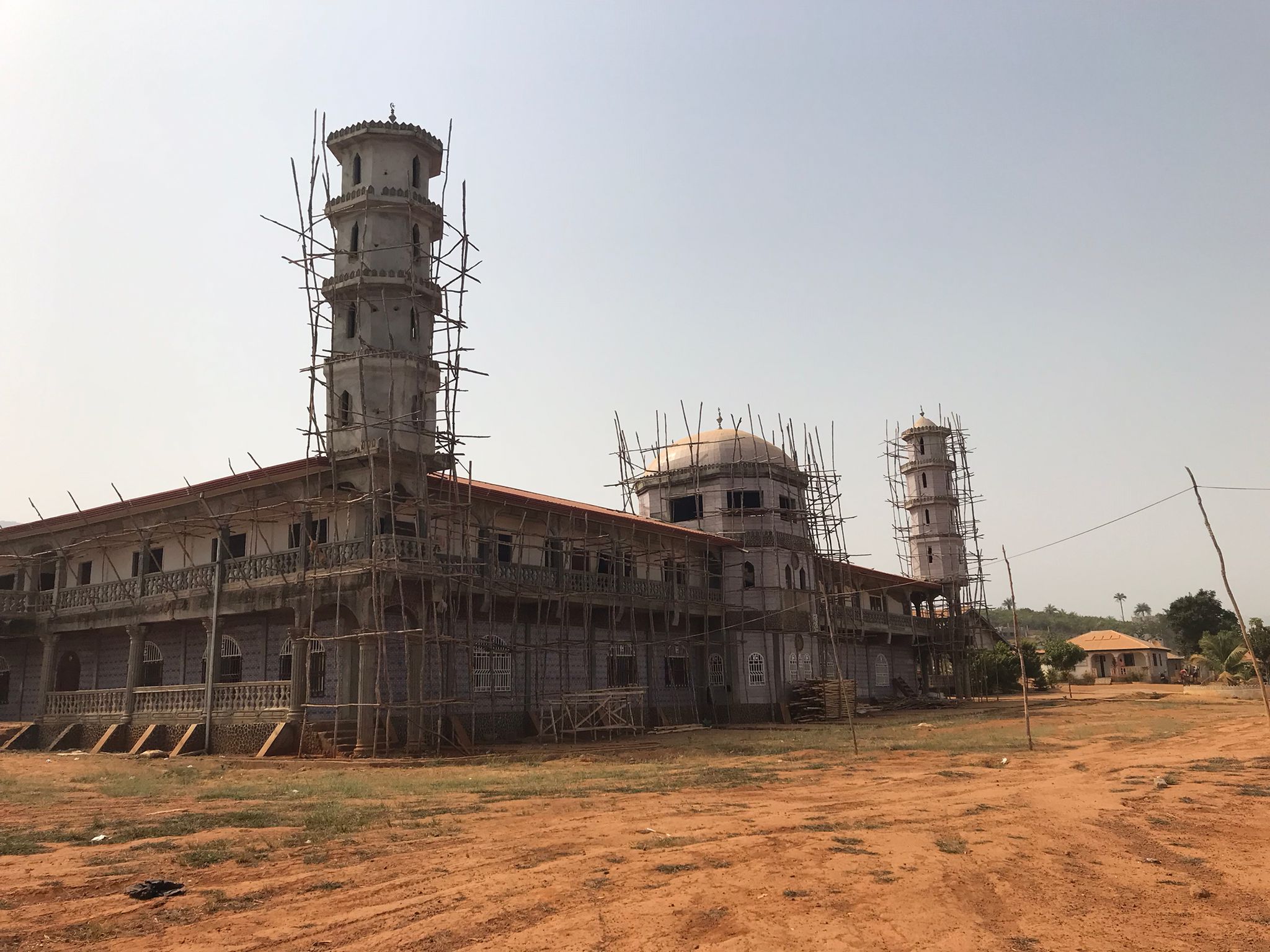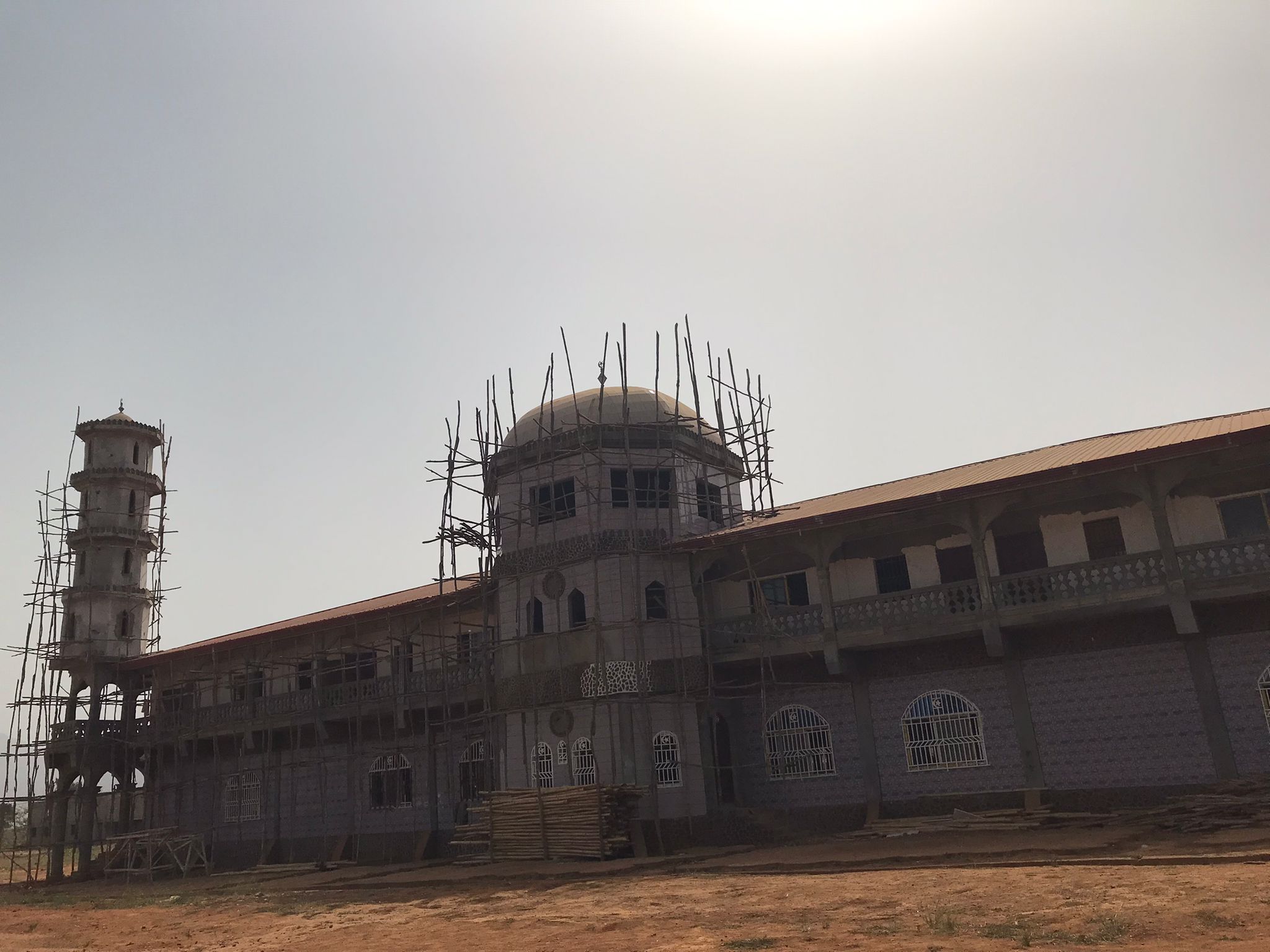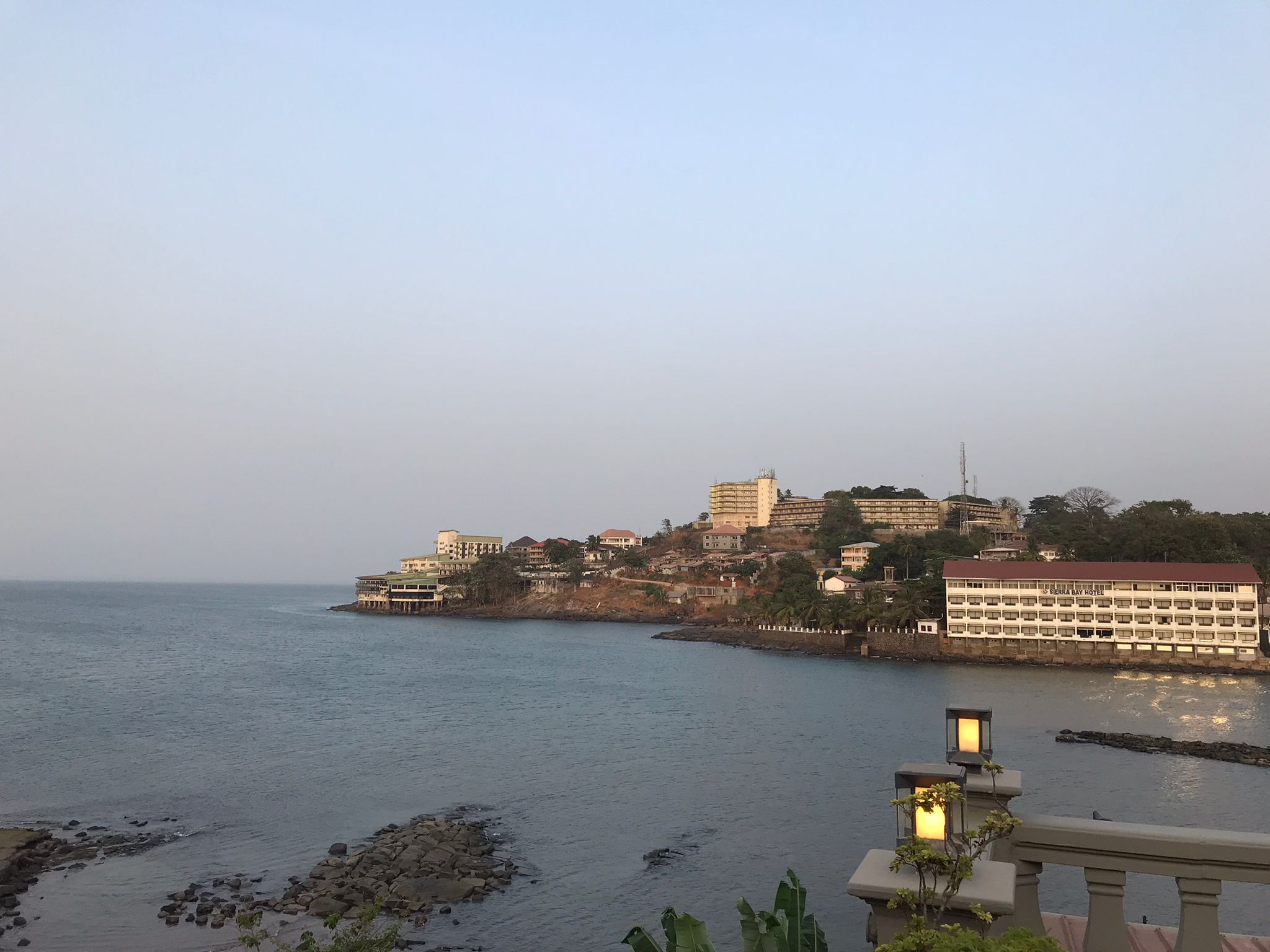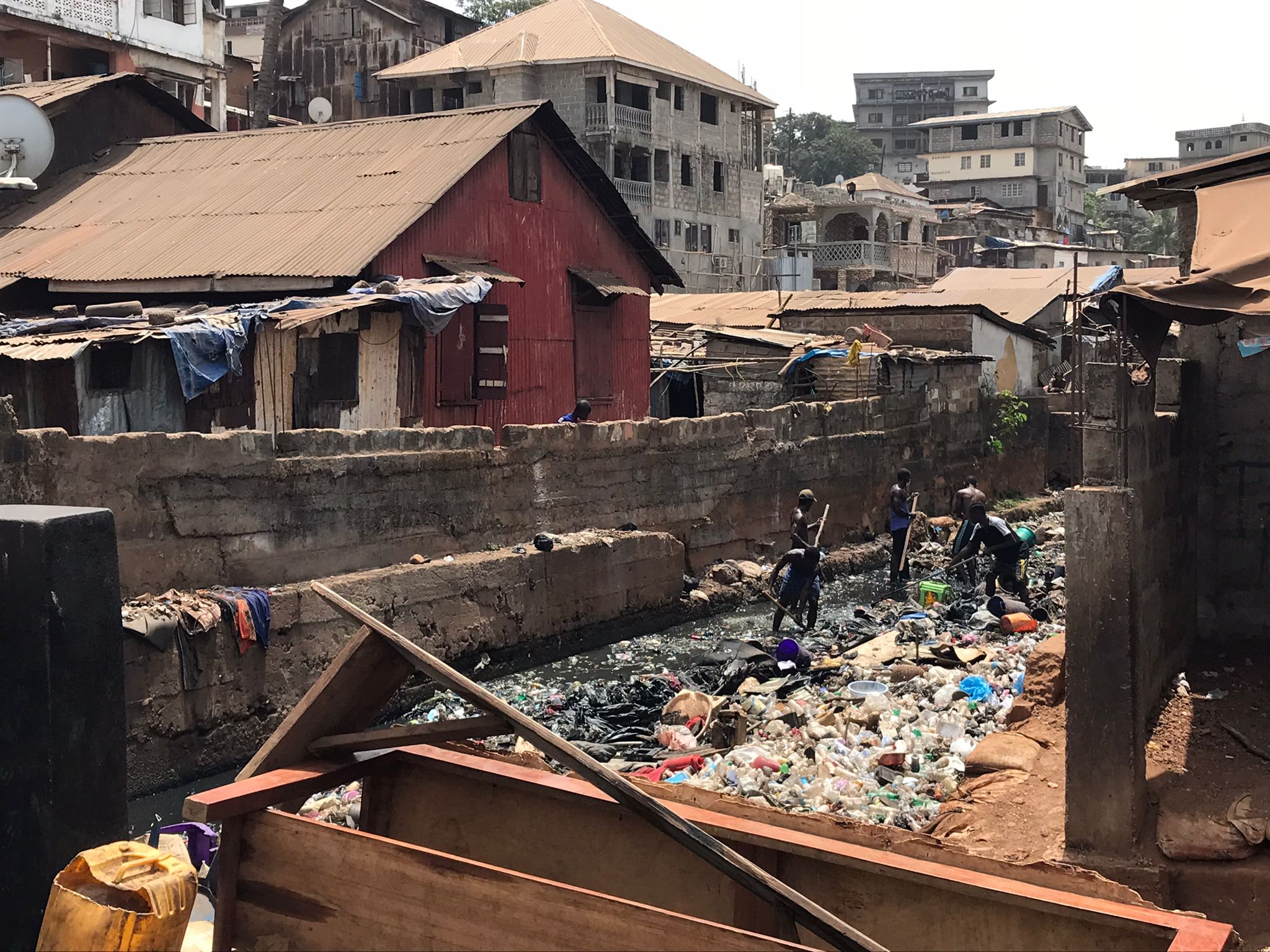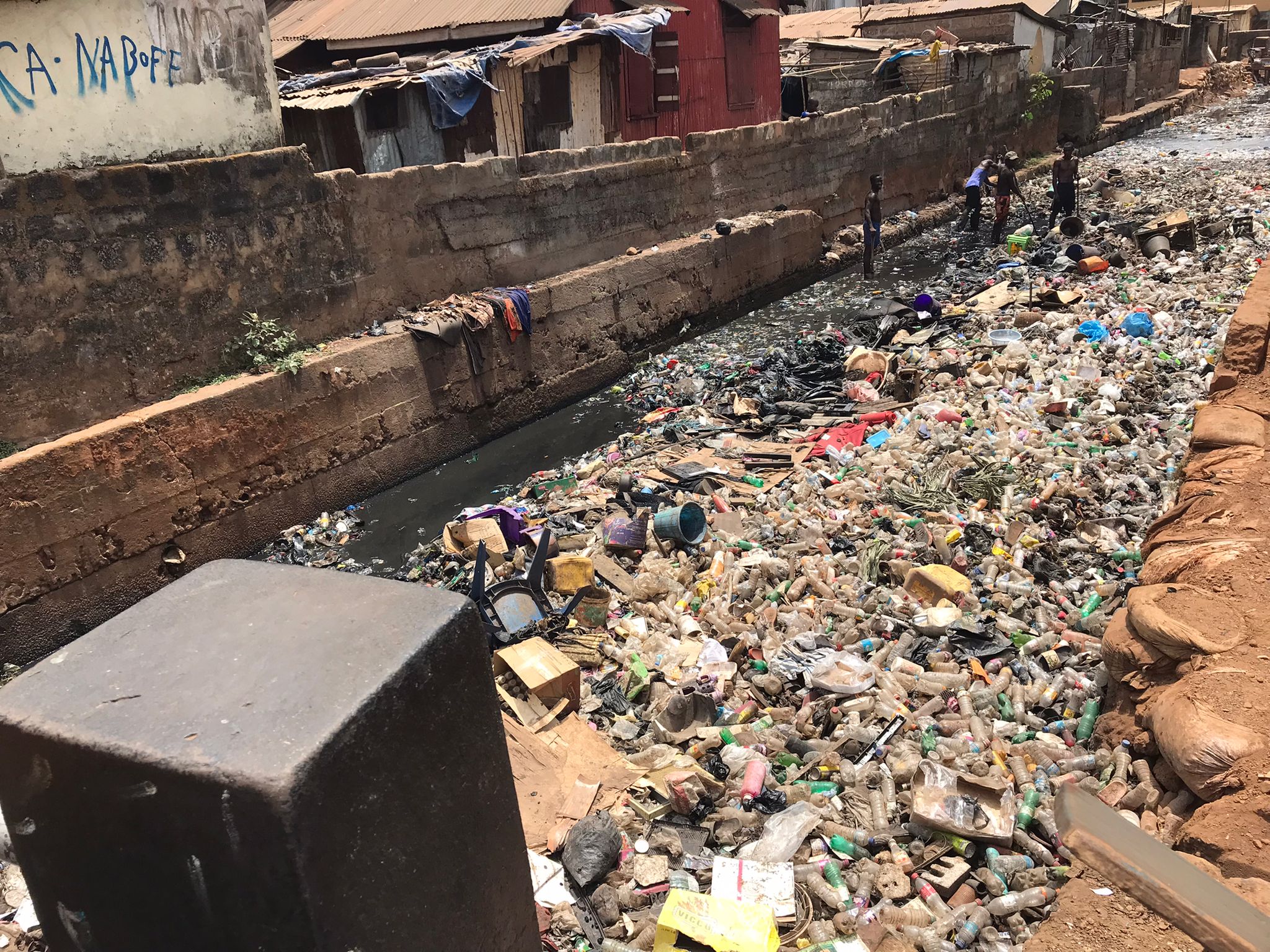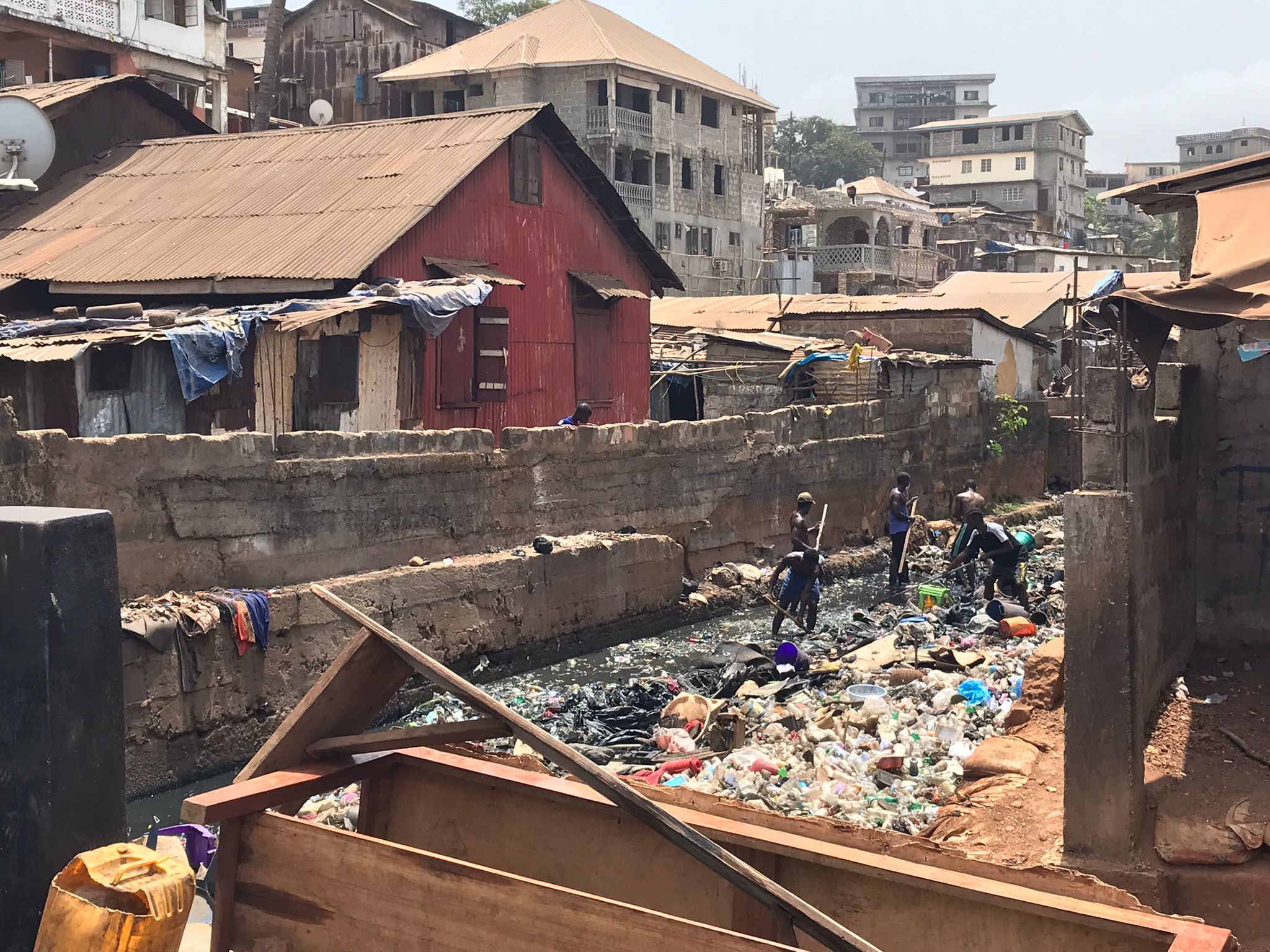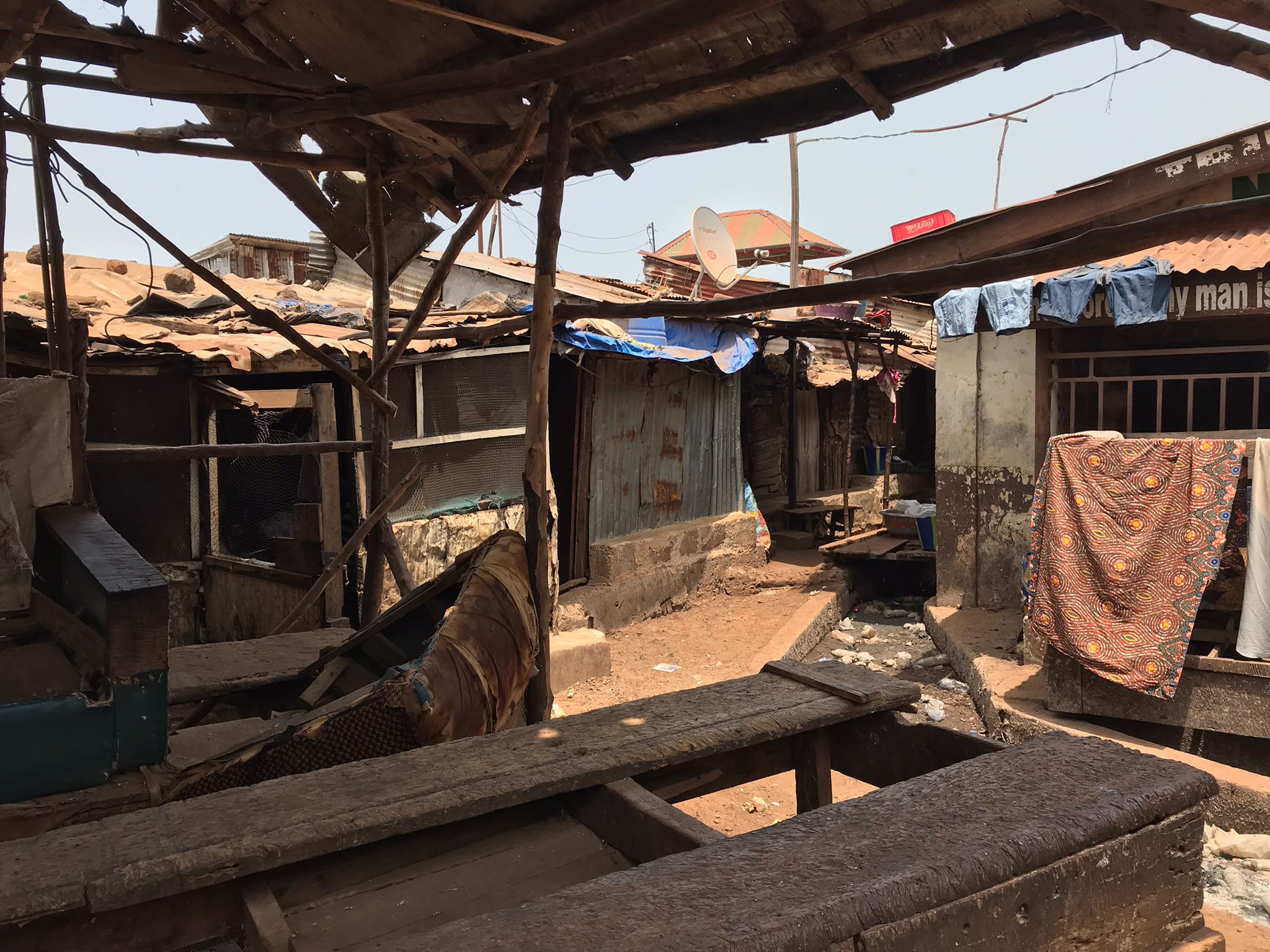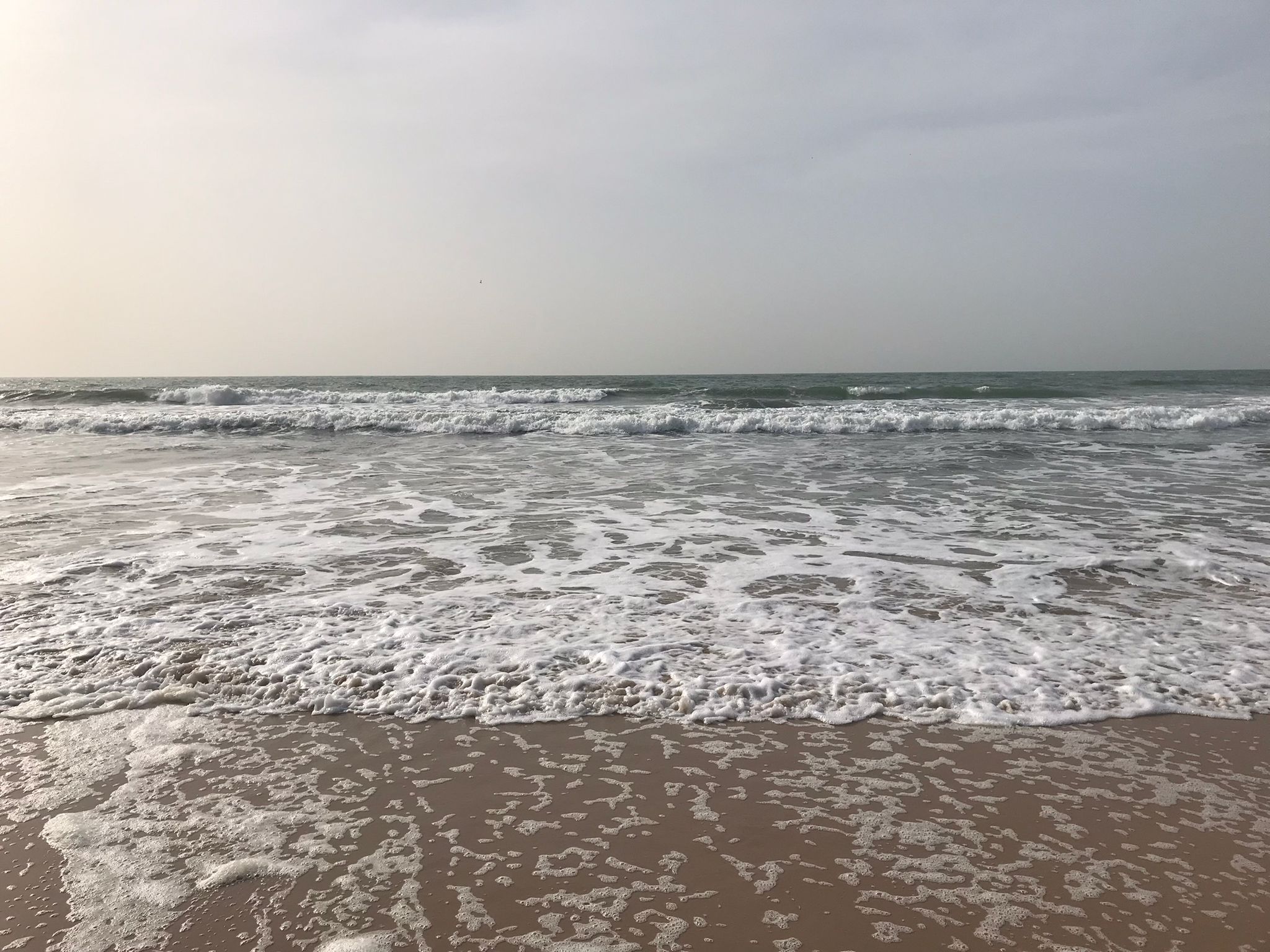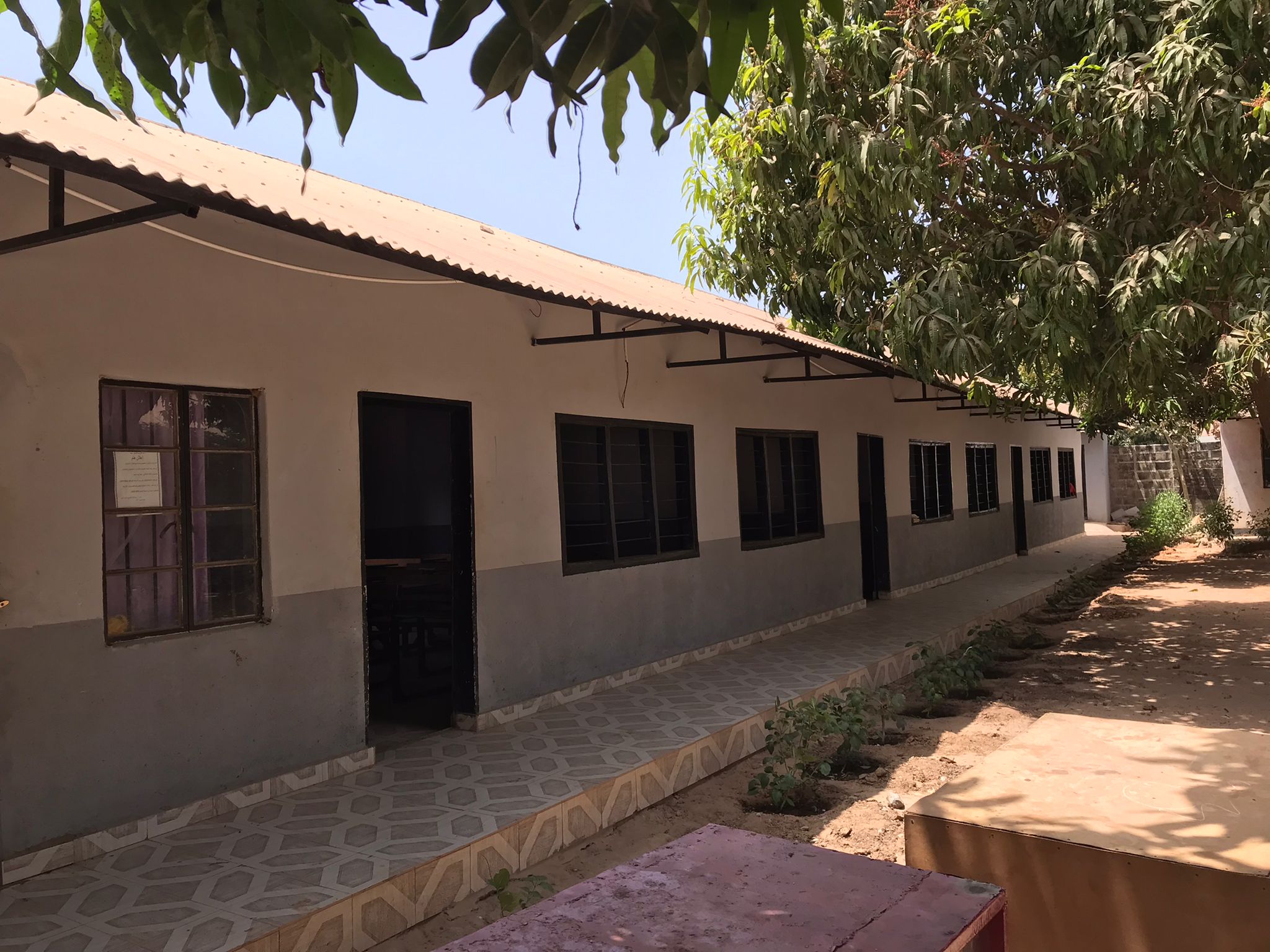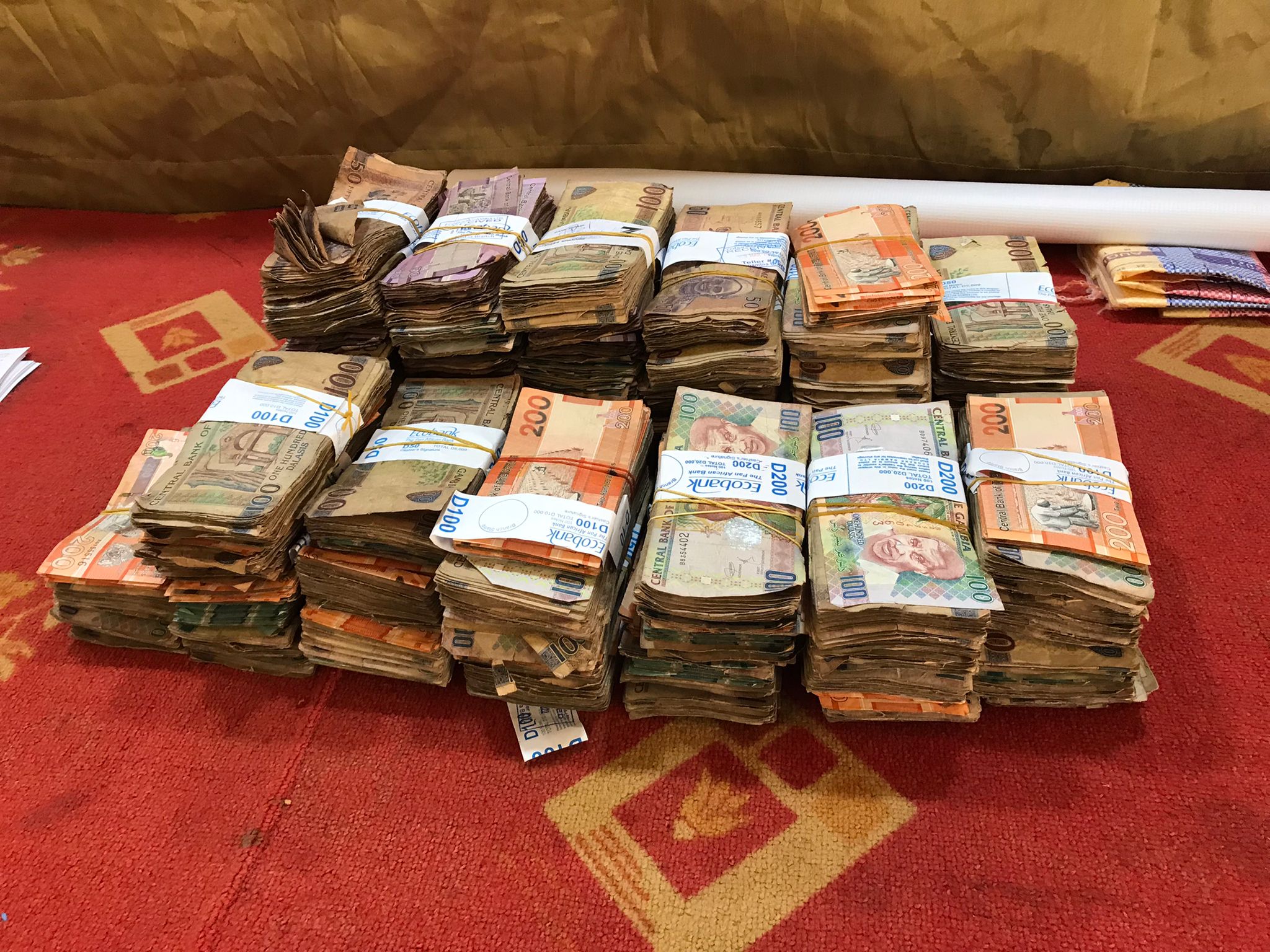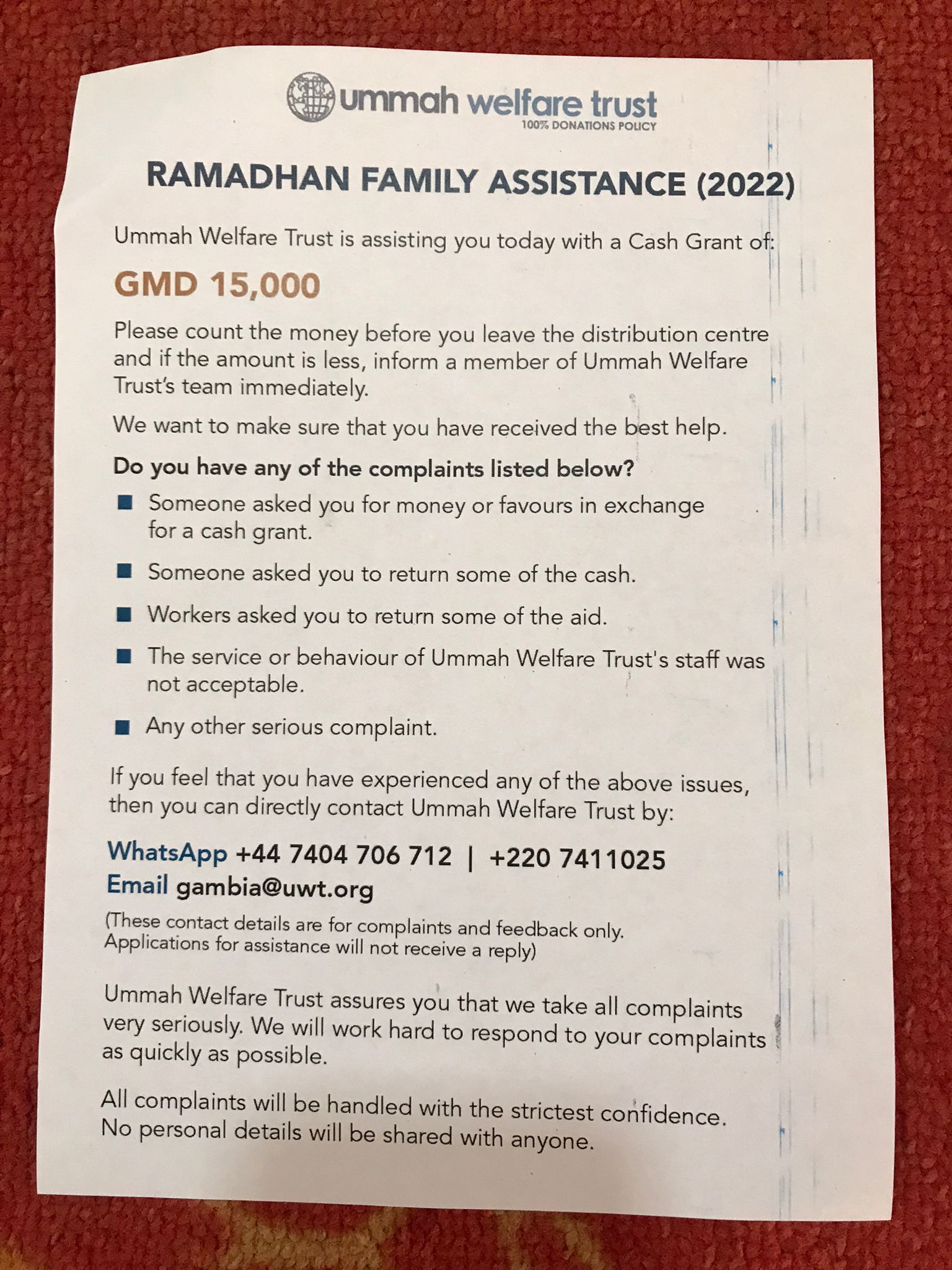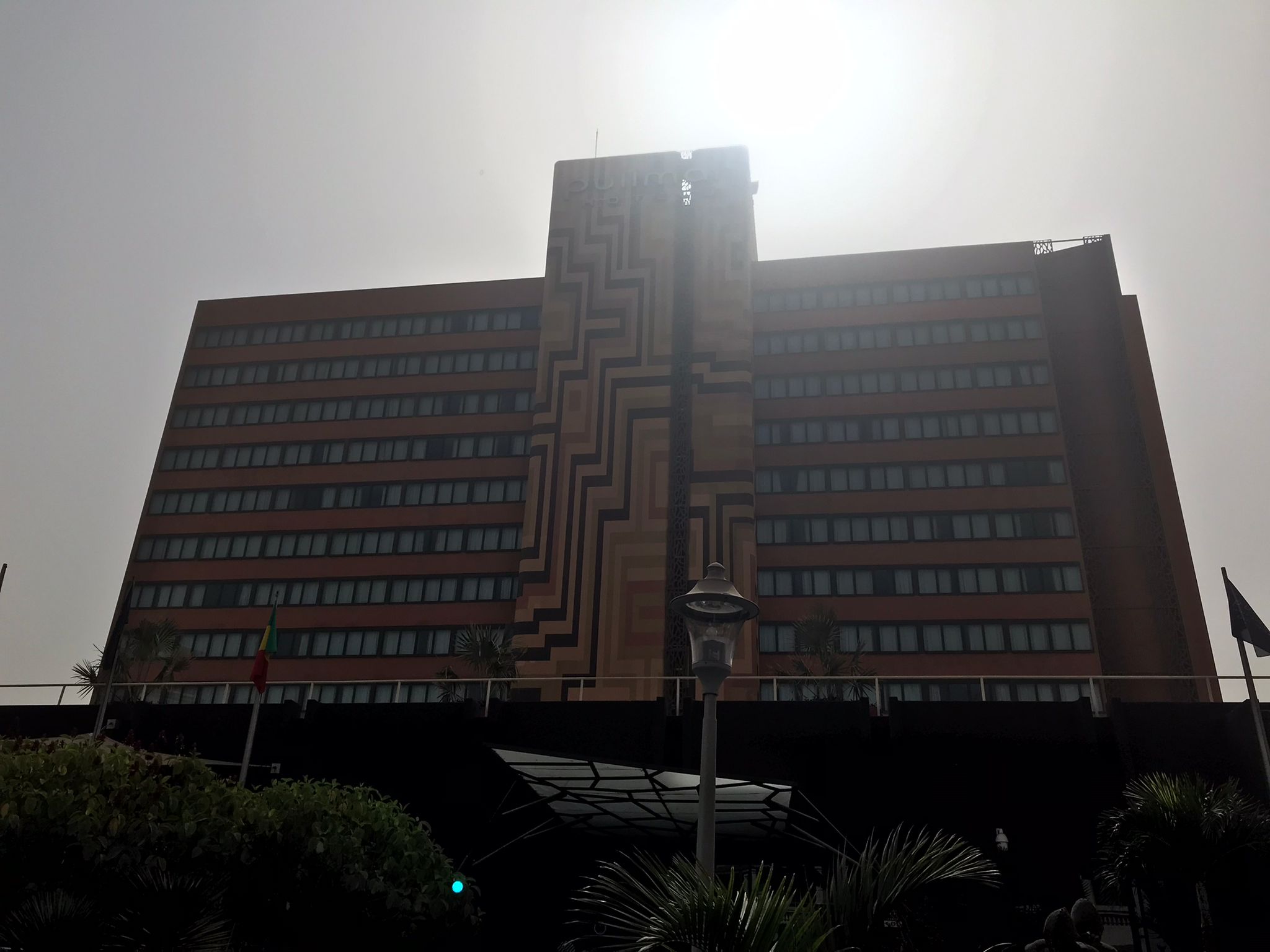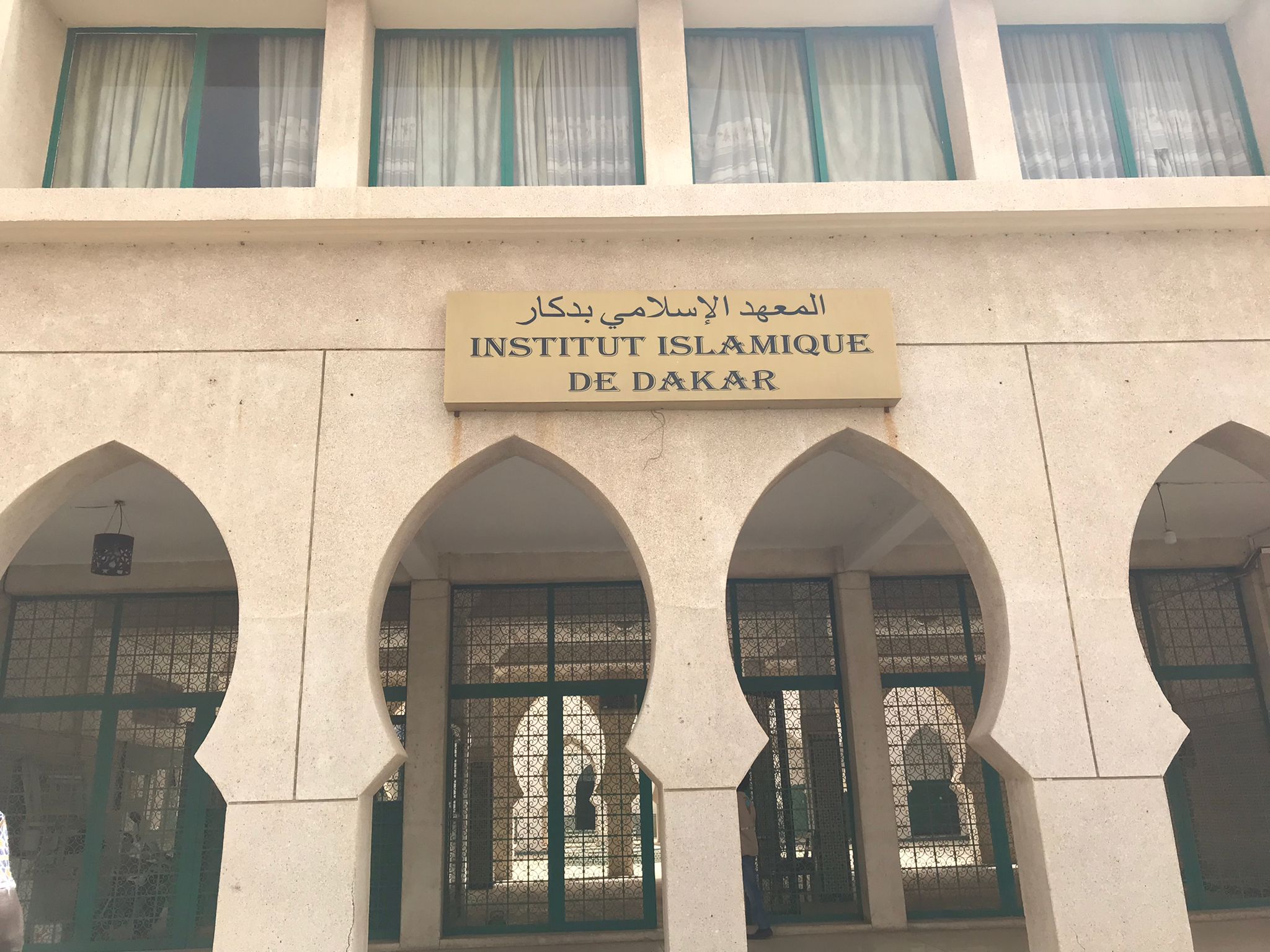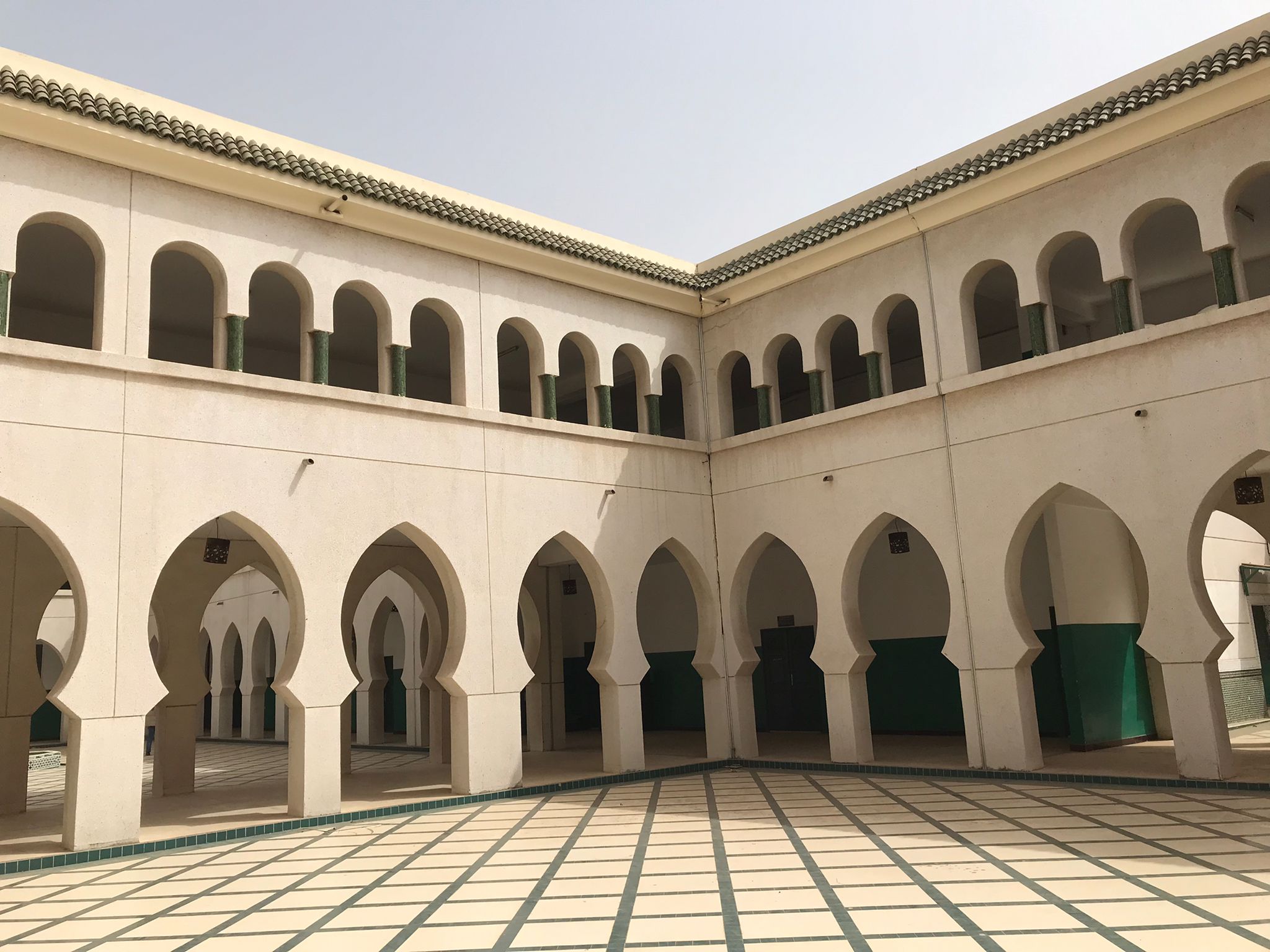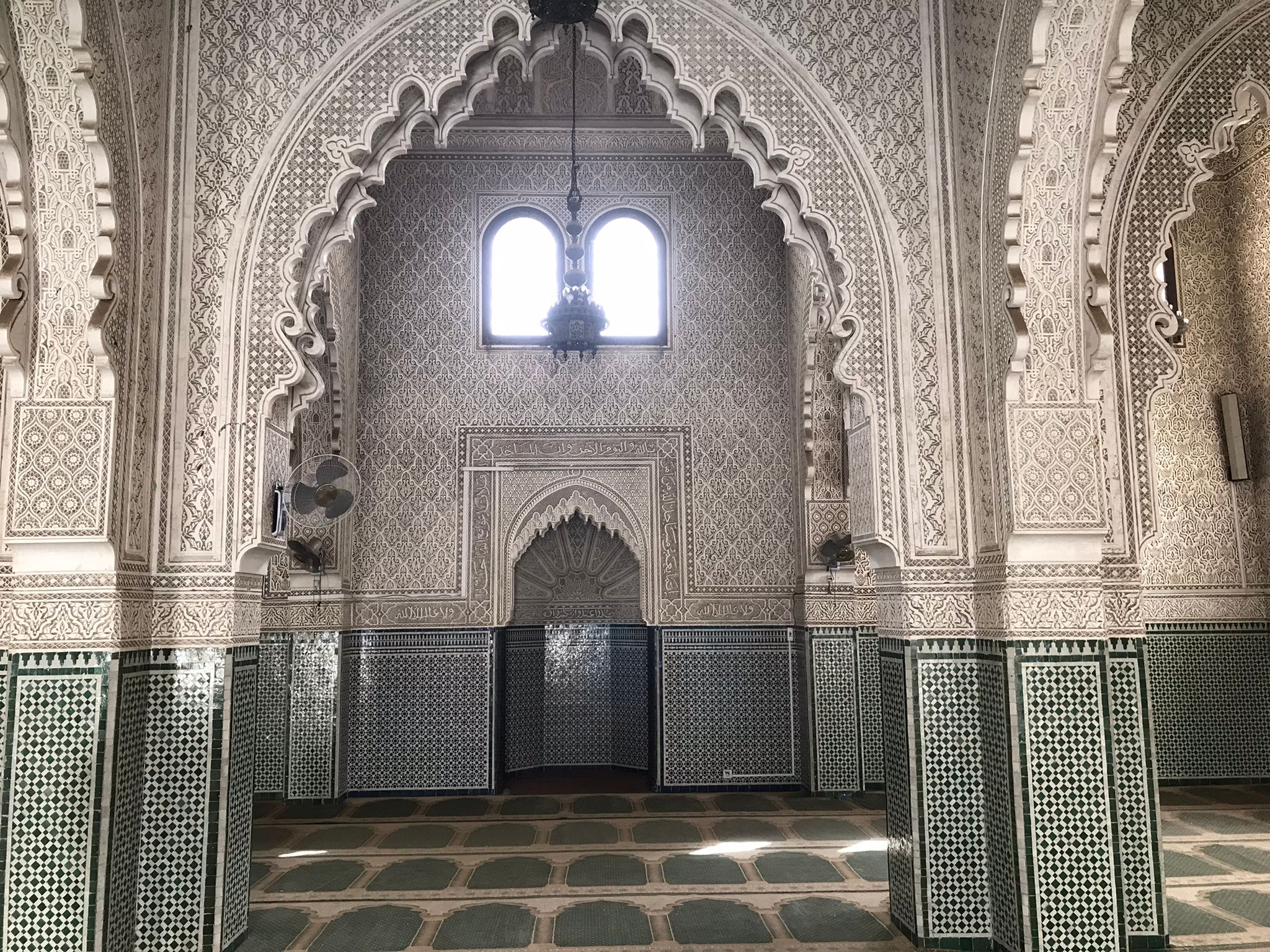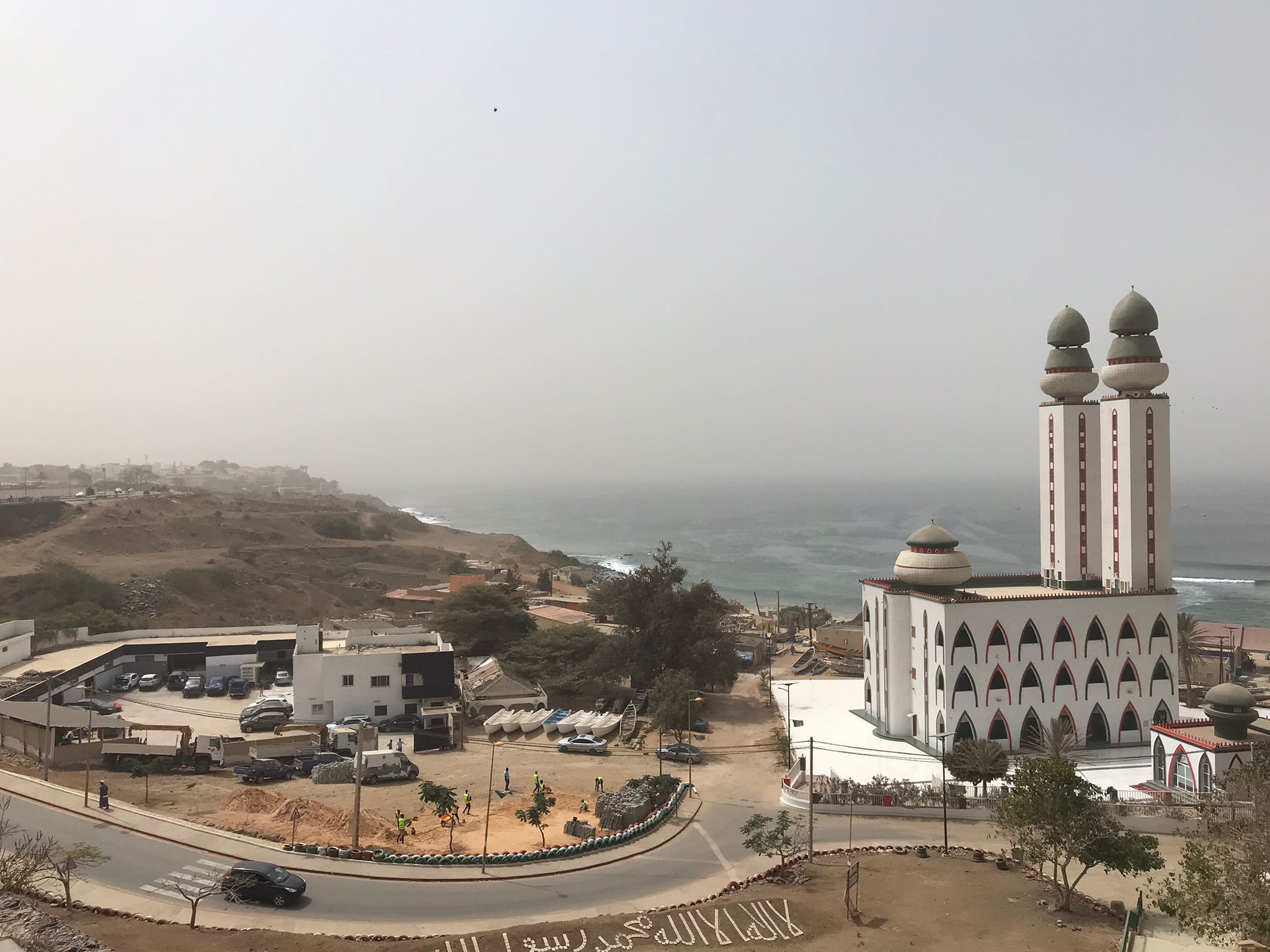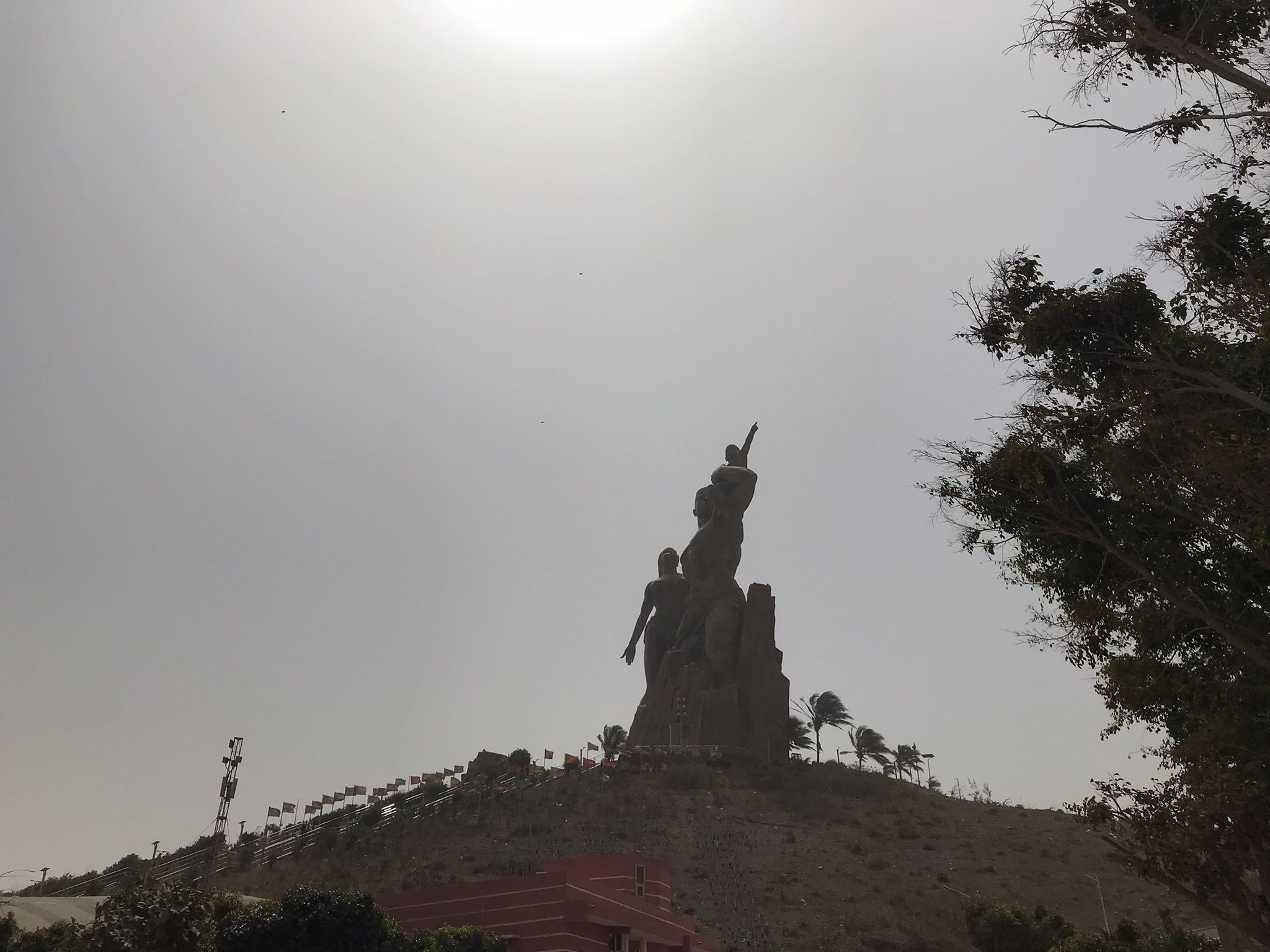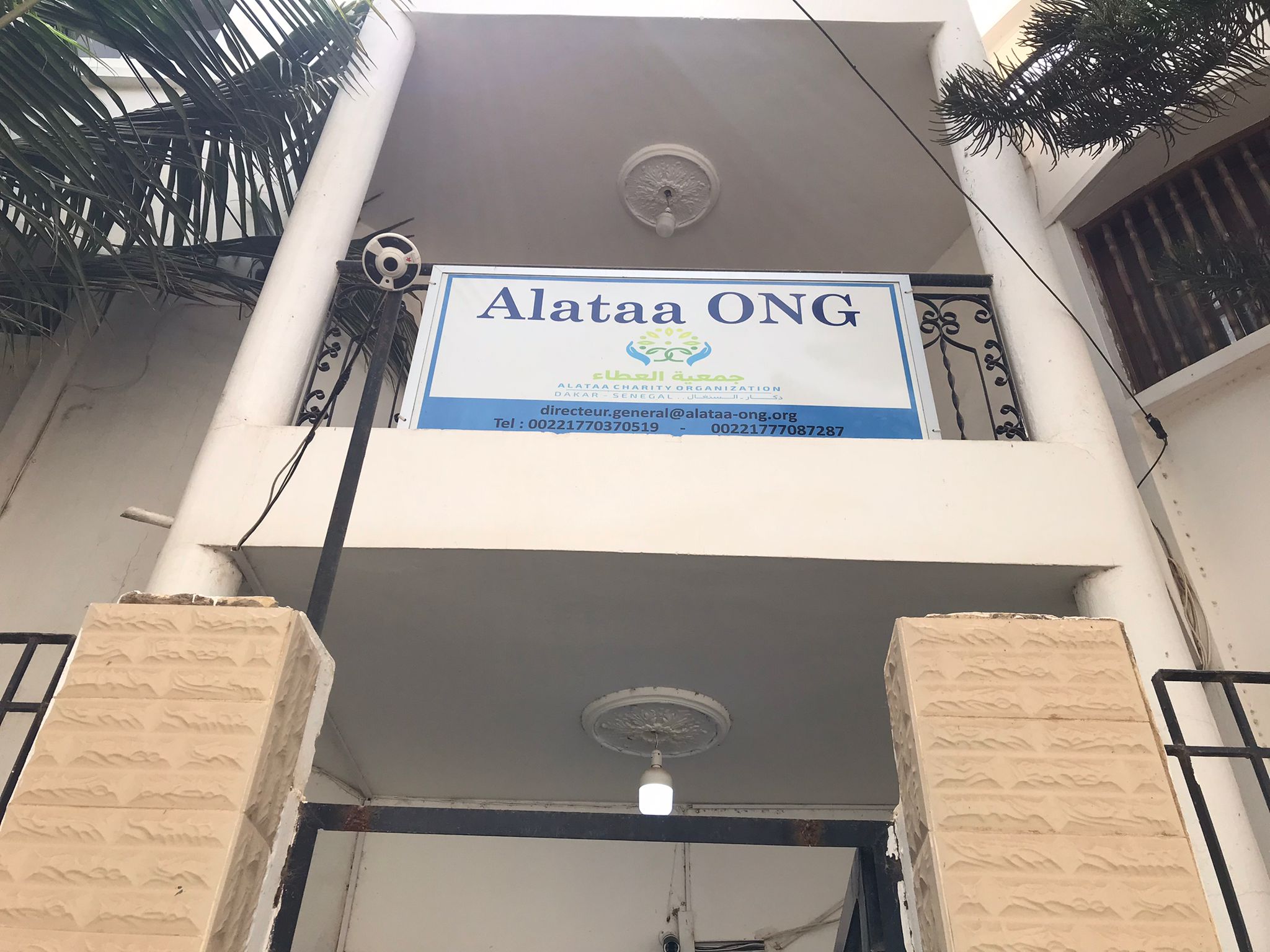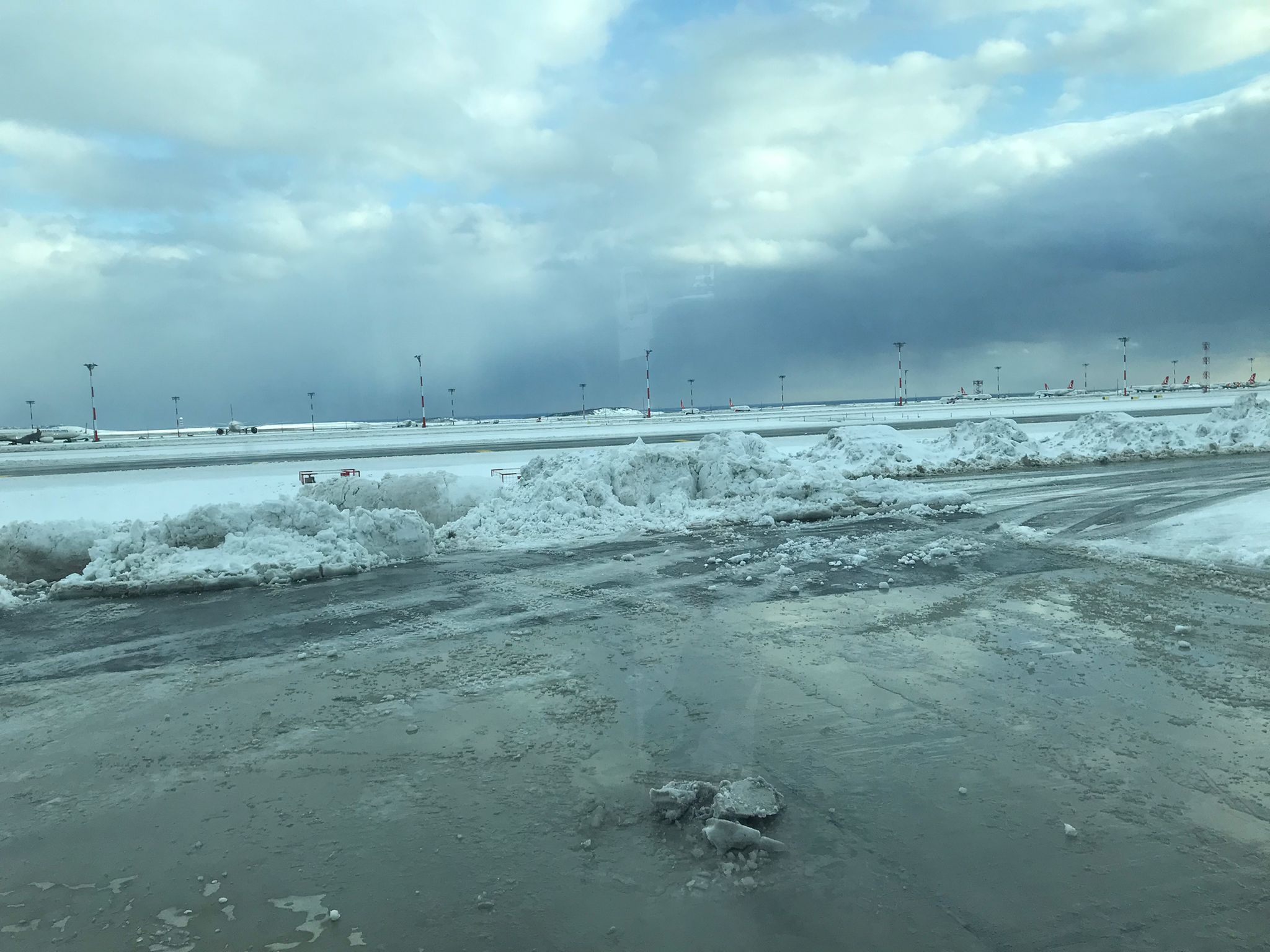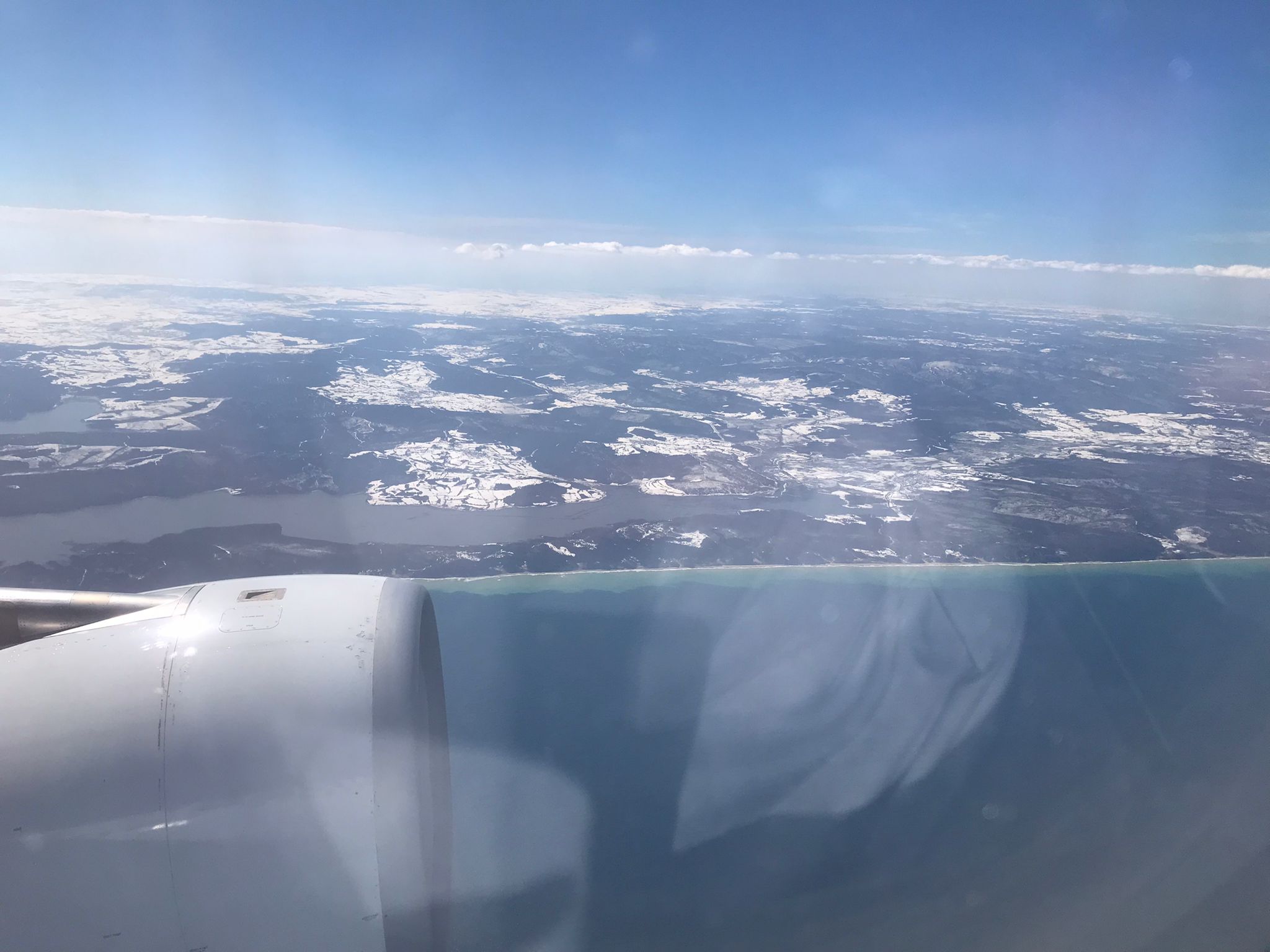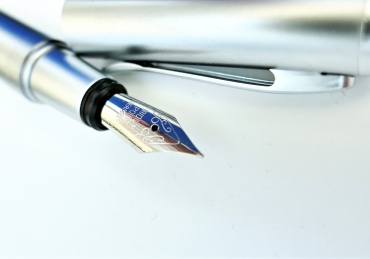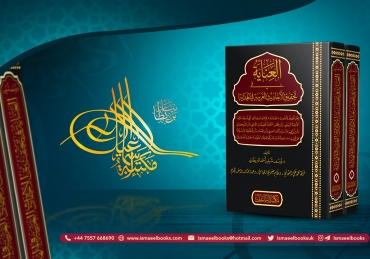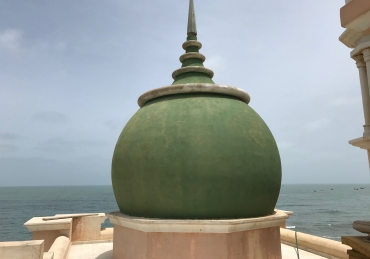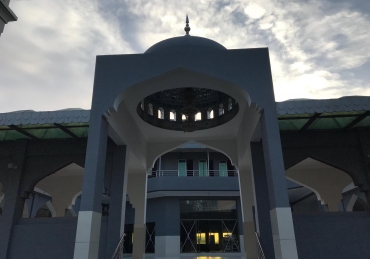Visit to Niger, Sierra Leone, The Gambia and Senegal (March 2022)
In the Name of Allah, the Merciful, the Beneficent
Day 1 – Wednesday 2 March 2022
From the UK to Niger
Introduction
Since the beginning of the Covid-19 pandemic two years ago, Covid-19 has disrupted international travel. Al-Ḥamdulillāh, throughout this period I have travelled to many countries with the most recent journey to Saudi Arabia in early February 2022.
Today, I am travelling to West Africa beginning with Niger. There are two flight options, Turkish Airlines and Air France. The flights however are not daily. I board the 11am Turkish Airlines flight from Manchester to Istanbul which departs 45 minutes late and arrives into Istanbul Airport at 6.30pm. Face masks remain necessary on most airlines including Turkish Airlines although some Airlines have started to drop the requirement. This is my first time at this new Istanbul Airport. It is modern, vibrant with many shops and good Ṣalāh facilities. The Carl’s Jr fast food outlet in the Food Court suggest that they are Halal and show me their Halal certificate.
At 9.15pm, the Istanbul to Niamey flight takes off and we head to Niger.
Niger
The Republic of the Niger is a landlocked country in West Africa named after the Niger River. Niger is a unitary state bordered by Libya to the northeast, Chad to the east, Nigeria to the south, Benin and Burkina Faso to the southwest, Mali to the west, and Algeria to the northwest. The country covers a land area of almost 490,000 square miles, making it the second largest landlocked country in West Africa, after Chad. Over 80% of its land area lies in the Sahara Desert.
The Encyclopaedia Britannica states:
“The country takes its name from the Niger River, which flows through the southwestern part of its territory. The name Niger derives in turn from the phrase gher n-gheren, meaning ‘river among rivers,’ in the Tamashek language.”
Niger’s population exceeds 24 million people and more than 99% are Muslim. The country is from among the poorest countries in the world with 42.9% of its people living in poverty, earning less than $1.90 a day. In 1890, the French colonised the country and following independence in 1960, it fell victim to a series of coups and political instability. Today, the country struggles in the face of frequent droughts, insurgency and wide-spread poverty. Economically, the country is betting on increased oil exploration and gold mining to help modernise its economy.
Day 2 – Thursday 3 March 2022
“I went to sleep hungry last night”
Arrival into Niamey
Our flight arrives into Diori Hamani International Airport at 1.30am. The Airport is located in the south eastern suburbs of the capital city Niamey. Niamey is located along the Niger River in the southwest corner of the country. It originated as an agricultural village of Maouri, Zarma, and Fulani people. It was established as the capital of Niger colony in 1926, and after World War II it grew rapidly.
The immigration process at the Airport is swift. British citizens require visa in advance which is easily obtained via post from the Niger Consulate in Milton Keynes. I am received at the Airport by Professor Abdoulaziz Abdou Oumar Sanda, the Vice Chancellor of Annahda International University. This is our first face to face meeting.
We leave the Airport and head to Noom Hotel, one of three good hotels in the city. There is no sign of Covid-19 here. Professor Abdoulaziz suggests that West Africa was hardly affected by Covid-19.
We arrive at the hotel at 3am, and it is time for some rest.
Annahda International University
At 11am, we head to Annahda International University. The university is recognised by the Niger Government and serves over 3000 students in a range of subject areas. The Niamey campus specialises in Religious Studies and Languages whilst the Maradi campus offers degrees in other Arts and Science subjects. The primary purpose of visiting the University is my PhD Viva. As many colleagues and well-wishers have contacted me regarding this, it is useful to provide some context and background to this.
The journey to PhD
In 2005, al-Ḥamdulillāh I graduated from Darul Uloom Bury and thereafter studied A Levels at Blackburn College. In 2010, I graduated from the University of Manchester’s Law School with an LLB (Hons). During this period, I also completed a Post Graduate Diploma in Islamic Banking and Insurance. In 2014, I completed my Masters in Human Resource Management from Robert Gordon University in Aberdeen and also acquired chartered membership of the CIPD (Chartered Institute of Personnel and Development).
Since 2015, Allah Almighty granted me the tawfīq to be involved in the writing of various books, articles and research papers in Arabic, Urdu and English. Some colleagues suggested as a result that I should consider a PhD. My respected father also suggested this as did my teacher Mufti Muḥammad Ṭāhir a decade ago. In June 2018, whilst travelling in the car in the Balkans with our respected Shaykh al-Islam Mufti Muhammad Taqi Usmani, I sought his advice in this regard and presented him with two subject areas for a potential PhD: One was in the field of international law and the books of Imām Muḥammad ibn al-Ḥasan al-Shaybānī (d. 189/805), and the other was on the influence of Ḥadīth on the scholars of Deoband. Mufti Ṣāḥib advised me to consider the former not least due to my legal background and also the importance of conveying the contribution of Imām Muḥammad to international law. Subsequently in 2020, I consulted ʿAllāmah Khālid Maḥmūd regarding this and I asked him regarding his PhD. He advised me to consider a PhD on the issue of the inheritance of grandchildren. However, Allah Almighty had planned otherwise.
The research on the Ḥadīths of Hidāyah
In August or September 2018, I received a question via our website from brother Shawkat Ali of Pakistan regarding the Ḥadīths of Ḥidayah and its author. At the time, I authored a 36-page answer in Urdu addressing the following questions of his:
- What are the ḥadīth credentials of the author of the classic ḥanafī manual Hidāyah, ʿAllāmah Marghīnānī (d. 593/1197)? Was he a ḥadīth expert?
- What is the status of the ḥadīths in Hidāyah which Ḥāfiẓ Zaylaʿī (d. 762/1360) and Ḥāfiz Ibn Ḥajar (d. 852/1149) were unable to locate?
- What is the ruling on narrating ḥadīths mentioned in books of jurisprudence that are not found in the ḥadīth books?
This answer is available on the following link: https://islamicportal.co.uk/queries-regarding-hadiths-of-hidayah/.
A year later in September 2019, I was fortunate to have organised a trip to Greece and Hungary with our respected Mufti Muhammad Taqi Usmani. During the trip, I presented a draft of my Arabic book ‘Tadhkirat al-Aʿlām al-Sūd’ featuring the profiles of 101 male and female black companions and scholars and requested Mufti Ṣāḥib to write a foreword, which he kindly did. Mufti Ṣāḥib also advised me during the journey that I should consider writing a commentary on Kitāb al-Amwāl of Imām Abū ʿUbayd (d. 224/838) and gave me some tips in this regard.
A few weeks later in October 2019, Allah Almighty placed a thought in my mind regarding the 36-page answer I had written a year ago. As I had only examined some Ḥadīths of Ḥidāyah which Ḥāfiẓ Zaylaʿī and Ḥāfiz Ibn Ḥajar were unable to locate, there was a need to undertake a comprehensive review and study of all such Ḥadīths in Hidāyah. I thus began, in the name of Allah, and for the next 8-10 weeks spent 13-15 hours daily on this task. By the end of December, the first draft was completed, I travelled to Saudi Arabia and India thereafter. Subsequently, in January 2020, Mufti Muhammad Taqi Usmani visited the UK and I presented the draft to him. Mufti Ṣāḥib was very pleased with the draft, commended me and also wrote a foreword.
Whilst not written with the intention of a PhD, a thought crossed my mind that this work could be suitable for a PhD. However, a few weeks later, Covid-19 began and I became busy.
Thereafter in August 2020, I visited Istanbul and met with several professors from various universities and discussed this project and the possibility of enrolling on to a PhD programme. I submitted an application at the Fatih Sultan Mehmet Vakıf University after discussions with the Dean of the Faculty of Islamic Sciences. However, due to time constraints, it later transpired that admission for the September 2020 round will not be possible. I decided not to pursue the matter any further. Many useful suggestions, nevertheless, were made by the various professors I met during this journey.
A year later in June 2021, I visited The Gambia where a friend Ahmad Tijan suggested to me, after reading some of my publications, that I should consider a PhD based on my forthcoming publication ‘al-ʿIqd al-Thamīn fī Ḥubb al-Nabī al-Amīn ﷺ’ (The precious necklace concerning the love of the Prophet, the Trustworthy ﷺ). I suggested to him the work on the Ḥadīths of Hidāyah would be more appropriate not least because it is not published and it is a more advanced work from an academic perspective and it, with Allah’s help, makes a significant contribution, which is an essential criterion for the award of a PhD. He promised to locate a university for me in Africa or Middle East and revert to me as the work was in Arabic. I did not think much of it at this stage.
However, a few weeks later, he contacted me with several options of which the most promising option was the Annahda International University in Niger, as it did not feature a taught element similar to UK universities. Many Middle Eastern universities, however, have a taught element at the beginning of the PhD Programme, often necessitating on site attendance.
I thus enrolled at the Annahda International University for a PhD in Ḥadīth and started liaising with my supervisor, Professor Abdoulaziz Abdou Oumar Sanda. After a few months and incorporating some changes, we agreed that the work is ready for submission for a PhD Viva and the viva date was agreed for March 2022.
Research objectives
The following objectives provide an overview of the research:
- To identify the gharīb (unidentified) ḥadīths from the works of Ḥāfiẓ Zaylaʿī (d. 762/1360) and Ḥāfiz Ibn Ḥajar (d. 852/1149).
- To map out the earlier Fiqh source(s) of the author, Imam Marghīnānī (d. 593/1197), for these ḥadīths and identify potential trends.
- To analyse and critically review the contribution of other scholars namely but not exclusively: Ḥāfiẓ Ibn al-Turkumānī al-Mārdīnī (d. 750/1349), Ḥāfiẓ ʿAbd al-Qādir al-Qurashī (d. 775/1373), Qāḍī ʿIbn Abī al-ʿIzz (d. 792/1390), Hāfiẓ Badr al-Din al-ʿAynī (d. 855/1451), ʿAllāmah Ibn al-Humām (d. 861/1457) and ʿAllāmah Qāsim ibn Quṭlūbughā (d. 879/1474) in relation to these ḥadīths.
- To identify the source and isnād (chain) of the ḥadīths that remain un-identified, in so far as possible.
- To ascertain the reasons the ḥadīths were not identified by earlier scholars.
- To critically assess the status of these ḥadīths and examine whether a ḥadīth ‘not found’ automatically means it is a fabrication.
- To critically examine the Ḥadīth credentials of Imam Marghīnānī.
Al-Ḥamdulillāh, the study was able to identify the source of 80 narrations in addition to those found by earlier scholars such as Hāfiẓ Badr al-Din al-ʿAynī, ʿAllāmah Ibn al-Humām and ʿAllāmah Qāsim ibn Quṭlūbughā.
In total, the study examined 379 Ḥadīths. This is preceded by a detailed Muqaddimah (introduction) comprising of four chapters with sub sections. This exceeds 200 pages whilst the remaining section comprising of the 379 Ḥadīths exceeds 900 pages. Readers are requested to supplicate that Allah Almighty accept the effort and grant the tawfīq to publish it.
PhD Viva
We arrive at the University at 11.45am. The two external examiners have also arrived; Dr Saeed Ahmad Khalid from Kano, Nigeria who is Professor at the Federal University, Gusau (FUGUS) and also the Al Qalam University, and Dr Abdul Qadir Ismaeel from the Bayero University in Kano, Nigeria. Both have travelled from Nigeria and speak fluent English. In Niger, English is not common unlike Nigeria. Prior to the Viva, we discuss the history, politics and current situation of Nigeria and the differences between Niger and Nigeria.
At 12.30pm, the Viva begins. Some 60 students and lecturers are present. The Viva is very challenging and several questions are posed to me on the procedural aspects rather than the substantive aspects, which is also a positive sign. The Viva lasts for two hours. The panel deliberate thereafter and invite me back to the lecture hall. They announce that I have successfully completed the PhD with Mumtāz (distinction) and the highest grade, al-Ḥamdulillāh. The external examiners request I make some minor changes and submit the final version to the University. They also strongly recommend for the research to be published.
Distribution of funds
At 3pm, we begin distributing money to some of the poorest and destitute of the community. When I travel to the developing world, several family members and friends give me money to distribute personally to the poor. I had made arrangements with a local charity in advance and requested them to choose four categories of beneficiaries. We distribute the following:
- 90,000 CFA ($155) for 25 widows and poor ladies each.
- 30,000 CFA ($52) for 25 elderly men each.
- 25,000 CFA ($43) for 17 disabled men and women each.
- 20,000 CFA ($35) for 40 Imams and scholars each.
The beneficiaries are delighted. The poverty is dire. I speak to several beneficiaries. A widow from the first category said,
“I went to sleep hungry last night”.
$155 for them is akin to Jannah! When I ask one of them how they will use the money, one replied,
“We will use it to purchase food.”
Another lady explains that she is a mother of seven children and her husband earns $1.5 (£1) a day.
Likewise, Imams from the fourth category explain that they receive no salary in their roles as Masjid Imams and share their plight. They request me to say a few words. I remind the Imams of the challenge of Ahmadiyya in West Africa in general and Niger in particular and request them to pay particular attention to this. Earlier in the day, Professor Abdoulaziz confirmed that according to the local scholars, the Ahmadis are not Muslims, something that is verified by the Imams present. However, as a secular state, the Government does not interfere in their activities.
Indian businessmen in Niger
Following the distribution and interacting with the aforementioned beneficiaries, we visit the Satguru Travel office at 6pm to book my onward flight tickets. The travel agency is run by Rishi, a Hindu businessman from India. He has three offices in the city. There is a lot of business potential here.
Outdoor conference
After Maghrib Ṣalāh, I am invited to deliver a speech at an outdoor conference in the Watada area of the capital, organised by Jamʿiyyat Ahl al-Sunnah wa al-Jamāʿah of Niger. The conference is attended by some 1500 people. My Arabic speech is translated into a local language. As a former French colony, English is not understood here. There are some Arab tribes and some people understand Arabic. French is the official language and there are several local languages. The theme of my speech is brotherhood, racism, Taqwā and the finality of prophethood. There is a lot of love for Islam here. People are religious. Women are modest. There is no nudity. It is rare to see a woman whose hair is uncovered.
Following the programme, I return to the hotel and rest for the evening.
Day 3 – Friday 4 March 2022
Distribution of clothes to poor women
Jumuʿah Ṣalāh at Masjid al-Noor
The morning begins with a visit to another office of the Satguru Travel agency as they were unable to take card payment at the branch we visited yesterday. From here, we head to Masjid al-Noor in the Francophonie area of the city where Professor Abdoulaziz and the local Imams request me to lead Jumuʿah Ṣalāh. After Jumuʿah Ṣalāh, the summary of the Khuṭbah (sermon) is explained by the local Imam in the local language. The people here are very welcoming.
The Turkish Airlines office
Originally, my plan was only to visit Niger during this trip. The plan now is to travel to Sierra Leone and thereafter to The Gambia and then Senegal. I therefore visit the Turkish Airlines office to re-route my return flight from Senegal to the UK. The flight from Istanbul to Manchester is full on the required date so I am re-booked to Birmingham at a cost of £240. The office does not take card payments, so we visit the Eco Bank ATM, withdraw some money and make the payment.
Islamic Relief Niger
Prior to my journey, my dear friend Tufail, the UK Islamic Relief Director connected me with the charity’s Country Director in Niger, brother Abu Bakr Moutari. He collects me from Masjid al-Noor and together we visit the Turkish Airlines office.
From here, we head to the Ballare area, 15 minutes from the Airport where 50 widows are gathered. Islamic Relief is sponsoring the widows and their orphan children by providing £300 a year. Islamic Relief is a renowned charity operating globally, its total annual budget in Niger is $5 million.
All the widows present are dressed modestly and it is clear that people are religious. They confirm they perform the five Ṣalāh.
Distribution of clothes
I had brought two suitcases of clothes with me to distribute. These clothes were collected by my mother and some cousins. We distribute one suitcase of scarves to the 50 widows present. The ladies are delighted and some wear the scarf immediately. As we leave the premise, one of the elderly ladies comes out wearing a donated scarf. Interestingly, she reminds me of an aunt who donated some of the clothes. We also observe the modest dwellings of these ladies.
Before heading to the hotel, I have dinner with Abu Bakr Moutari at a local restaurant near the hotel. A range of issues are discussed.
Meeting some students
Later in the evening, we visit the Annahda International University and meet with some students who struggle to afford the $550 annual fees. They share their plight and request assistance.
Large three-day conference outside the Gaddafi Mosque
Next, we head towards the Gaddafi Mosque which is the largest mosque in the country. It is also known as the Grand Mosque of Niamey. It was built in the 1970s with Libyan support and features a minaret with 171 steps from top to bottom.
Outside the mosque, some 5-6000 people are gathered partaking in a three-day outdoor Islamic conference. The conference is organised by two local organisations and has attendees from eight West African countries. We meet with some of the prominent scholars of the country here and also gift them some of my publications.
I ask Professor Abdoulaziz why conferences are held outdoors here. He explains that it is primarily due to Masjids not having AC facilities and sometimes the Masjids cannot accommodate large numbers of people. The temperature here in the evening is 25 degrees Celsius, and during the day the temperature exceeds 40 degrees Celsius.
Several thousand people participating in this outdoor conference reflects the religiosity of the people.
Day 4 – Saturday 5 March 2022
Visit to rural areas of Niger
Covid test
It is necessary to take Covid tests prior to leaving the country. As my onward flight is tomorrow morning, I visit the Government facility where Covid tests are administered for 25000 CFA (£32).
There are several French army personnel here and I also see them elsewhere. Whilst the French may have ended colonial rule in 1960, the reality is that independence was never achieved. This is the same for most other African countries. Economic imperialism remains and so does military imperialism in many countries. The US army also has a military base in Niger.
Visit to Tree Aid project
Our main programme for the day is to visit a Tree Aid project in a rural area of the country. Tree Aid is UK based charity which focuses on working with people in the Sahel region in Africa to tackle poverty and the effects of climate change by growing trees, improving people’s incomes, and restoring and protecting land. It was established in 1987 by foresters in response to famine in Ethiopia and since then has restored 164,822 hectares of degraded land, supported 38,650 people to develop enterprise groups selling seeds, fruits and nuts from trees for sustainable income, and grown 24,542,563 trees. The charity operates in the drylands of Africa, in Burkina Faso, Ghana, Mali, Niger, Ethiopia and Senegal.
Djabou Kiria, Falmey
We travel with the charity’s local representative brother Amadou Harouna Mahamadou towards Falmey municipality, which is 155km to the South East of the capital. Professor Abdoulaziz also joins us. The RN1 road until Margou Benne is paved, however, the road thereafter is a gravel. Generally, the road infrastructure in the country is weak. The following map illustrates this. Paved roads are in green, ‘improved’ (gravel or laterite) are in solid orange, ‘piste’s or dirt roads and tracks are orange dashes.
The journey takes three hours. Poverty is visible throughout the journey. We arrive at 12.45pm at the office of the mayor of Falmey, Idris Hasan who praises the work of Tree Aid and other NGOs.
We then proceed to Djabou Kiria, Falmey which takes another 20-30 minutes and arrive at 12.45pm. Here, we observe a project of Tree Aid wherein a group of 25 ladies were given an oil extraction machine along with a nut breaking machine. The cost is a few thousand dollars.
The ladies use these machines to produce oil, soap and other items. They earn $500 a month in total, this is $20 per person. This is a good enterprise project. Tree Aid has not planted tree areas in this area, but have done so in other areas of the country recently. Rather than making people reliant on aid, such enterprise projects are good to empower poor people.
Return to Niamey
At 1.15pm, we start the return journey to Niamey. On route, we observe the conditions of the people.
We come across a Madrasah and school comprising of four classrooms, all made of tree branches and leaves with the Salah facilities outside marked on the ground. This is common here, I am informed.
We discuss many issues including the history of the country. Professor Abdoulaziz explains that prior to the French occupation, the country was home to many scholars especially in the North Eastern city of Agadez. The French killed hundreds of scholars.
We return to Niamey at 5pm.
Meeting Mawlānā Jibrīl
Prior to travelling to Niger, Mawlānā Saʿīd ʿInāyatullāh Makkī provided me a contact of one of his students who connected me with the Pakistani Ambassador to Niger, Mr Ahmed Ali Sirohey. Unfortunately, he is currently in Pakistan. However, he requests me to meet Mawlānā Jibrīl and understand the plight of Muslims in general and specifically in relation to the Qādiyānīs (Ahmadis).
Mawlānā Jibrīl comes to the hotel. He speaks fluent Urdu. He resided in Pakistan for six years and graduated from the famous seminary in Binori Town, Karachi in 2005. He currently runs a small Madrasah in Niamey which serves 26 students. Some are Ḥifẓ students whilst some are in the earlier years of the ʿĀlim class. Mawlānā is also an Imam at a local Masjid, and whilst he gets a nominal $100 a month, he confirms that Imams in the country do not normally receive a salary. I ask him how he ended up in Pakistan. He explains that this was a result of his father’s involvement in the Tabligh Jamaat. He also confirms what other scholars mentioned earlier that the food in the hotels and restaurants in the country is generally Halal and can be trusted.
The Ahmadiyya in Niger
We then proceed to discuss the challenge of the Ahmadiyya in the country, as this was the main reason why Mawlānā Saʿīd ʿInāyatullāh had shared the connection. I have documented in earlier travelogues to Sierra Leona and The Gambia of how West Africa is a target region for the Ahmadis (Qādiyānīs). Mawlānā Jibrīl confirms that there are a lot of Ahmadis working here, and whilst they may not be as strong here as they are in some other West African countries, they are getting stronger. Many of the youth do not know their true beliefs. Mawlānā visits different parts of the country to educate the people, notwithstanding the limited resources. The Pakistani Ambassador is also supporting his efforts in this regard. Whilst these efforts are commendable, it is clear that there is a need for a strategic and country wide effort in an organised and sustained manner.
Day 5 – Sunday 6 March 2022
From Niger to Sierra Leone
Farewell to Niger
At 6am, Professor Abdoulaziz collects me from the hotel. I have some local currency left, so we distribute 10,000 CFA ($17) to 15 people on the way. Professor Abdoulaziz bids me farewell. It has only been three days since we first met in person, however, it is as though we have known each other for a long time.
My overall impression of the country from a religious perspective is that people have a lot of love for Islam. However, a lot of work is required to quench the thirst of the people and empower them. From an economic perspective, the country has many natural resources and minerals, however, the people are extremely poor. It is one of the poorest countries in the world. From the UK based Muslim charities, I am only aware of Islamic Relief and Muslim Hands operating here. Perhaps one of the reasons behind this is that French is spoken here. Other UK based charities should consider working here particularly in the fields of Daʿwah and Islamic education.
From Niger to Burkina Faso
I board the 8.20am ASKY flight to Lome, Togo via Ouagadougou, Burkina Faso. Passengers travelling to Togo do not need to disembark as the same flight continues to Togo.
Burkina Faso is also a landlocked country bordered by Mali to the northwest, Niger to the northeast, Benin to the southeast, Togo and Ghana to the south, and the Ivory Coast to the southwest. Its population exceeds 20 million with at least 60% Muslims.
From Burkina Faso to Togo
The next flight from Burkina Faso to Lome, Togo is delayed. We arrive with over an hour and a half time before the next flight.
Togo, officially the Togolese Republic is bordered by Ghana to the west, Benin to the east and Burkina Faso to the north. The country extends south to the Gulf of Guinea, where its capital and largest city Lome is located. Togo covers 22,008 square miles, making it one of the smallest countries in Africa, with a population of approximately 8 million as well as one of the narrowest countries in the world with a width of less than 71 miles between Ghana and its eastern neighbour Benin, which is also quite narrow, except for its northern parts. Its Muslim population is approximately 20% which perhaps explains the unfriendly behaviour of staff at the Airport.
Togo appears to be a central connecting point for passengers travelling in West Africa. The Airport is very busy and it takes more than an hour to navigate the security queue for transfer passengers.
From Togo to Ghana
The next flight from Togo to Sierra Leone is via Accra, the capital of Ghana. Ghana, officially the Republic of Ghana, spans the Gulf of Guinea and the Atlantic Ocean to the south, sharing borders with the Ivory Coast in the west, Burkina Faso in the north, and Togo in the east. Approximately, 20% of the population is Muslim.
Like Lome, Accra is also a travel hub for the region. A very dear friend has travelled on Emirates from Dubai and joins me on the onward flight to Freetown, Sierra Leone. Shaykh Bilal Ismail, of the Imam Development Programme (IDP), has also travelled from South Africa via Ethiopia and joins us on the same flight. We are now a group of three travelling to Sierra Leone.
From Ghana to Sierra Leone
The ASKY flight lands in Lungi International Airport in Sierra Leone at 4.30pm. A car collects us from the plane. A covid test is taken at the Airport, which has to be booked in advance, it costs £50. There is a stark difference in the way ladies dress here and Niger, despite Sierra Leone being a Muslim majority country.
We are received at the Airport by Brother Fuad, one of the main people responsible for the work of Ummah Welfare Trust (UWT) in Sierra Leone, who I have known since my first visit in 2016. We cross over from Lungi to Freetown, check in to Radisson hotel and freshen up.
Later in the evening, we meet with the former minister Musa Tarawally and discuss a range of issues over dinner. He suggests that UWT has revived the pride of Islam in the country. One of the key issues we discuss is the economic empowerment of Imams and scholars so that they stand up on their own feet. Some of the suggestions include rickshaws, fishing boats and farming tractors.
This is my fifth visit to Sierra Leone. The accounts of the previous visits are available online www.islamicportal.co.uk, therefore this section of the travelogue will be brief.
Day 6 – Monday 7 March 2022
Visit to various projects of UWT
At 9.30am, we arrive at the UWT Headquarters on Wilkinson Road. The charity’s annual budget here exceeds £5 million. The charity runs 199 Maktabs with over 25,000 students. 139 Masjids have been built to date and there are many other programmes. Al-Ḥamdulillāh, the charity has made significant progress since first beginning to work here in December 2016. I am grateful to Allah Almighty first and foremost for making me a means for this, and a special mention must be made of former mayor of Blackburn, Salim Mulla and former minister Musa Tarawally.
Throughout the day, we visit various projects including the Mama Wuri institute and the Ilmo Zikri school.
We also visit Waterloo, where we meet Abdur Rashid Kamara, the district chief Imam who is responsible for 119 Imams and 78 Masjids. He has benefited from UWT’s cash grant program and is hugely appreciative. He suggests that empowering Imams via rickshaws is a good idea. From here, we visit the Aid 4 Ummah Darul Uloom project in Waterloo.
We return to Freetown and visit the Al-Huda and Ansar al-Islam institutes respectively where UWT is running Maktab classes.
The charity is not only funding teachers, but has developed a curriculum for West Africa which includes colour coded booklets for children. A lot of effort has gone into this. At the Ansar al-Islam, there are female Hifz classes operating also sponsored by UWT. We decide to distribute the second suitcase of clothes here to the Ḥifẓ girls.
We eat dinner in the Lagunda restaurant and rest for the evening.
Day 7 – Tuesday 8 March 2022
A Pleasant Surprise
Meeting the Police Imams
At 9.45am, we meet with ten ‘Police Imams’ at the UWT Headquarters. They are trained police officers who alongside their professional responsibilities serve as Imams and lead Ṣalāh for police officers. 70% of the police force is Muslim which reflects the Muslim population of the country.
The Chief Imam of the Police is Alhaji Kelfala Bangura who is also Assistant Commissioner. He suggests that the needs of the community include the following: (1) Establishing Muslim schools. (2) A mortuary. (3) Water facilities. He specifically makes reference to girls leaving the homes at night in search of water and thereby risking abuse. (4) Hospitals. (5) Daʿwah in the police force. (6) Masjids for police officers.
Meeting with Muslim umbrella organisations
Next, we meet with the representatives of some of the main Muslim organisations including the Supreme Islamic Council and the Sierra Leone Muslim Missionary Union. The meeting is also attended by the Deputy Minister of Social Welfare, Rt. Hon Mohammed Haji Kella, who stayed in the UK for 30 years and is an expert on race relations. He was a Director in the Children’s Services department of Kent Council but returned to Sierra Leone in 2018 at the request of the President. His salary in the UK was £70,000 per annum, and his current salary is £10,000 per annum.
A discussion follows regarding the economic empowerment of Imams and scholars. Shaykh Bilal Ismail also shares the work of the Imam Development Programme (IDP) in six southern African countries and explains that IDP aims to build a community of dynamic and inspirational Imams, by delivering an exceptional support and developmental program, so that they can lead the way in establishing faithful, confident, and united communities. The attendees express their support for a similar programme in Sierra Leone.
Plastic Waste
We also discuss with the Minister the challenge of plastic waste. This is a major problem in the slums of the city as we observed yesterday and today. Water sachets (commonly used as drinking containers in the country), empty bottles and jerry cans litter the streets and clog up drains, causing flooding in disaster-prone areas. My friend proposes a national campaign in this regard perhaps with buy in from some of the large corporations in the UK.
Meeting with Mastūrāt Jamāʿat from Ahmedabad, India
Yesterday, I received a message from my friend in Ahmedabad, Haji Afzal Memon requesting me to meet with Uwais Sureshwala and his colleagues who are in Mastūrāt (ladies) Jamāʿat here. We meet Uwais Bhai and his colleagues at a local Masjid in Freetown and are amazed at their courage and sacrifice. It is not easy spending two months here, living in the Masjids. The greater challenge is for the ladies living in someone’s residence.
Uwais Bhai and his colleagues share with us their experiences and how almost most of them fell ill at some stage. This is testament to their sacrifices. There are four men and four women from Ahmedabad. Uwais Bhai’s wife is also part of the Jamāʿat, she is the Headteacher of one of the Shama schools in Ahmedabad, which I have visited. Uwais Bhai suggests that there is a great need to establish hospitals and good English medium schools here along with Muslim businesses.
Distribution of money
Later in the afternoon, we distribute $5000 among 100 poor people in several locations of Freetown.
Day 8 – Wednesday 9 March 2022
From Sierra Leone to The Gambia
The meeting yesterday with the Deputy Minister and discussion on plastic waste prompted him to invite us to his office to discuss the issue further. We arrive at his office at 11am. He suggests to take us to Kroo Bay and also Burmeh to see first-hand the dump sites and the slums affected by plastic waste.
From here, we visit the centre of Freetown city, including the Masjid being built outside the Parliament by UWT. We eat lunch at the Crown Bakery in the centre of the city and cross over to Lungi via boat. We board the 5pm ASKY flight to Banjul and arrive at 6pm.
We check into the Coco Ocean hotel and later in the evening meet Ibrahim Seesi, who works in the UWT office in The Gambia. The Gambia is much cleaner than Sierra Leone. Plastic waste is not an issue here as paper is used. In terms of religiosity, The Gambia is similar to Niger.
This is my second visit to The Gambia. Thus, this section of the travelogue will also be brief. For more details, refer to the previous travelogue on the following link: https://islamicportal.co.uk/a-few-days-in-sierra-leone-and-the-gambia-2021/.
Day 9 – Thursday 10 March 2022
Meeting with the Imams from across the country
At 9.30am, we head to the UWT Office in Banjul and meet with the various staff. In particular, we meet the officer Ibrahim Ceesay responsible for income generating and economic empowerment programmes. He shares the model of the Imams economic empowerment programme wherein 58 Imams from across the country were given a rickshaw, with the rickshaws managed on a day-to-day basis by an external management company that provides a fixed fee to the Imams on a monthly basis. The cost of a rickshaw is approximately £1725 and the Imams receive at least £100 a month if not more. This is a pilot project which only began a few weeks ago.
Our next step is the Supreme Islamic Council where the 58 Imams have gathered. We speak to the Imams and explore whether this arrangement works best and what else can be done to empower the Imams. Agriculture is suggested among other schemes. We also visit the Joe Bradford company which manages the Rickshaws on behalf of the Imams and review the contract.
At 1.35pm, we arrive at the country office of Munaẓẓamah al-Daʿwah al-Islāmiyyah, a famous organisation that works across Africa. Its headquarters was previously in Sudan. However, it is now based in Niger. We are welcomed by Dr Lubna, who was introduced to us by Dr Hani Al-Banna. She is the country head of the organisation. Across The Gambia, they sponsor 3750 students and have several projects totalling $500,000 per annum. Most of the funding comes from Qatar and the UAE.
We eat lunch at the Rasoi Indian restaurant. We return to the hotel, visit the beach and rest for the evening.
Day 10 – Friday 11 March 2022
From The Gambia to Senegal
Shaykh Jobe Islamic Institute, Brikama
We arrive at the Shaykh Jobe Islamic Institute in Brikama at 12.45pm. I previously visited this institute. The institute currently has 400 students, of which 35 are residential. There are 28 staff.
Today, the institute is closed as it is Friday. We meet with some of the students and my friend gifts them some money for their dinner.
King Fahad Mosque
We return to the city and proceed to the King Fahad Mosque, the largest mosque in the country.
We return to the city and proceed to the King Fahad Mosque, the largest mosque in the country. The Friday Khuṭbah is in Arabic in its entirety. Prior to the Khuṭbah, the Imam delivers a speech in the local language. This is somewhat similar to what happens in the Indian subcontinent and mosques aligned to them in the UK. When the Muadhdhin gives the Adhān, he does Tarjīʿ – that is to say the four phrases of Shahādatyn quietly before saying them loudly. This is one of the methods of Adhān as detailed in my book Tanshīṭ al-Ādhān Min Kitāb al-Arbaʿīn Fī al-Adhān. Mufti Saʿīd Aḥmad Pālanpūrī (d. 1441/2020) has written in Tuḥfat al-Almaʿī (1: 505) that Tarjīʿ is no longer practiced anywhere by the Mālikīs and Shāfiʿīs. This is incorrect. Tarjīʿ is practiced in Mauritania and some other countries. It appears that many Shāfiʿīs have stopped acting upon it, but many Mālikīs have not.
Distribution of donations
At 3.30pm, we arrive at the Supreme Islamic Council where UWT has invited fifty poor people to receive 15,000 Gambian dalasi (£213) as part of the Ramadan support package.
We assist in the distribution and observe the stringent verification process of the charity. A form is also distributed explaining to beneficiaries on the charity’s complaints process. This is also explained in the local language.
We also speak to the beneficiaries. One widow shares her story. She has five children. Her husband passed away four years ago. She is not working. She had a stroke. She has no income. Her eldest is 26-year-old girl, she is not married. She says that she will use this money to buy food items. She thanks the donors.
From The Gambia to Senegal
We have a farewell meeting with Shaykh Bilal and discuss the IDP. Shaykh Bilal shall return in the morning to South Africa from here, whilst me and my friend are traveling to Senegal as our return flight to the UK and Dubai respectively is from Senegal. We checkout from the hotel at 8pm and travel to the Airport. There is traffic on the way. We board the 10.25pm Air Senegal flight and arrive in Dakar in half an hour.
Senegal
Senegal, officially the Republic of Senegal, is located at the westernmost point of the African continent and served by multiple air and maritime travel routes, which is why it is known as the ‘Gateway to Africa’. It is bordered by Mauritania in the north, Mali to the east, Guinea to the southeast, and Guinea-Bissau to the southwest. The country nearly surrounds The Gambia and shares a maritime border with Cape Verde. Its economic and political capital is Dakar which is an Atlantic port on the Cap-Vert peninsula. 96% of the country’s population is Muslim.
Senegal has been inhabited for thousands of years. The Arabs arrived in the 11th century and many of the local tribal peoples converted to Islam. Later, in the 13th and 14th centuries the Mandingo and the Jolof Empires formed in Senegal. When Europeans first arrived, Senegal became a major area for slaves. The Encyclopaedia Britannica states:
“The region today known as Senegal was long a part of the ancient Ghana and Djolof kingdoms and an important node on trans-Saharan caravan routes. It was also an early point of European contact and was contested by England, France, Portugal, and the Netherlands before ultimately coming under French control in the late 19th century. It remained a colony of France until 1960, when, under the leadership of the writer and statesman Léopold Senghor, it gained its independence—first as part of the short-lived Mali Federation and then as a wholly sovereign state.”
Like much of North and West Africa, the Sufi saints were at the forefront of fighting the colonial powers here.
Arrival into Senegal
We arrive into Blaise Diagne International Airport shortly after 11pm. Unlike The Gambia, the visa on arrival is free in Senegal. This is my first visit to Senegal although I have transited here previously.
We are received at the Airport by Dr Muhammad Kah, the country lead for Munaẓẓamah al-Daʿwah al-Islāmiyyah. Dr Lubna from The Gambia introduced us to him. He is accompanied by the Egyptian brother Muhammad Nagi (Nājī) from the Alataa charity. The Airport is more than 50km from the city. Unlike Niger, Sierra Leone and The Gambia, Senegal or at least the capital appears to be very developed. The road infrastructure is excellent. It does not feel like an African country.
We arrive at the Pullman hotel shortly after midnight.
Day 11 – Saturday 12 March 2022
Tour of Dakar city
Landmarks of Dakar
We checkout from the hotel at 11am and begin a tour of the city with Dr Muhammad Kah, our host. We pass the Parliament, the Presidential Palace and the building that houses various Government ministries. Dr Kah explains that the Government here is secular although the Sufi groups hold a lot of influence. He adds that some elements within the Mouride brotherhood Sufi order are extreme in their reverence of their Shaykhs, but nonetheless defend Islam and apply pressure on the Government as necessary. The other two famous Sufi orders here are the Qādirī and the Tījānī orders.
The Grand Mosque of Dakar
At 11.15am, we arrive the Grand Mosque of Dakar. It is one of the most important religious buildings in the city and is marked by a towering minaret which rises to 67 meters. It was designed by French and Moroccan architects and is stylistically similar to the Mausoleum of Mohammed V in Casablanca. The mosque was opened in 1964 by Hassan II, King of Morocco and Senegalese President Leopold Sedar Senghor. Dr Kah informs us that the current President performs the Friday prayer here.
Unfortunately, the mosque is close and we are unable to enter. However, the neighbouring ‘al-Mahad al-Islami’ Islamic education institute is open. There is also a small Masjid within the complex.
Ahmadiyya in Senegal
I ask Dr Kah about the Ahmadiyya in Senegal. He suggests that the Ahmadiyya are not as active here as they are in some other African countries, although they have attempted to build a Masjid. I politely suggest to Dr Kah that we should avoid using the term ‘Masjid’, instead we should use ‘Maʿbad’ (place of worship) in line with our belief that they are not Muslims.
Masjid Lā Ilāha Illā Allah
Next, we visit the Masjid Lā Ilāha Illā Allah, also known as the Mosque of the Divinity. This is a stunning mosque offering unparalleled views of the Atlantic Ocean with two towering minarets. In 1973, a man by the name of Mohamed Gorgui Seyni Gueye envisaged a grand mosque on the beach. He took his dream as a commandment from Allah. This is a must visit for anyone travelling to Senegal.
Dakar feels like more of a city in the Middle East. It is clean. The infrastructure is good. Dr Kah suggests that one of the reasons for this is that the government is stable unlike many African countries.
African Renaissance Monument
Next, we visit the African Renaissance Monument.
The Black History Heroes website states:
“The African Renaissance Monument, also referred as Monument to the African Renaissance and Monument De La Renaissance Africaine, is a bronze statue perched on a hill in Dakar, Senegal. The representation of a man, woman and child emerging from a volcano was inaugurated at a ceremony on April 3, 2010, featuring hundreds of drummers and dancers. The African Renaissance Monument stands erect against the West African skyline in Senegal at 164 feet high, taller than the Statue of Liberty in the U.S.A.”
It further states: “The unveiling marked Senegal’s 50 years of independence. Senegalese President Aboulaye Wade has said he hopes the public monument will attract tourists to the West African country, and defended the public monument in writing, stating “[t]his African who emerges from the volcano, facing the West … symbolizes that Africa which freed itself from several centuries of imprisonment in the abyssal depths of ignorance, intolerance and racism, to retrieve its place on this land, which belongs to all races, in light, air and freedom.”
“It’s impossible to miss Senegal’s new 160-foot (49 meters) African renaissance monument,” wrote NPR reporter Ofeibea Quist-Arcton. “Perched high on a hill, the mighty Soviet-style bronze statue of a man, woman and child overlooks the Atlantic Ocean and dominates the horizon of the capital, Dakar.”
President Wade authorized the public works project in the capital of Dakar, described by some as an African Eiffel Tower and others as a work that should never have been commissioned. Its $27 million dollar (£17m) cost and style stirred complaints from many in the predominantly Muslim country.
Ndeye Fatou Toure, a member of the Senegalese Parliament, said the statue was an “economic monster and a financial scandal in the context of the current crisis,” noting that half of Senegal’s population lives below the poverty line. Additionally, the choice of garb for the African family was seen as an affront to the Muslim sensibility of public discretion.” (Black History Heroes website)
Dr Kah suggests that the finger in the picture is according to some a gesture to Freemasonry.
The House of Slaves on Goree Island
The House of Slaves and its Door of No Return is a museum and memorial to the Atlantic slave trade on Goree Island, 3 km off the coast of Dakar city. We do not have time to visit it as it requires travelling by boat, otherwise this would be worth visiting.
Alataa Charity
At 12.40pm, we arrive at the office of the Alataa charity.
We are welcomed by Ibrahim Roshdi, the President along with the Director of Projects, Muhammad Nagy (Nājī) who received us at the Airport yesterday. The charity’s annual budget is $5-6 million, and most of the funding is received from Qatar Charity. A range of projects are delivered across Senegal including sponsorship of orphans and Imāms. The charity is also doing some economic empowerment programmes via animals and is interested in the concept of Imams economic empowerment.
Rassemblement Islamique du Senegal (R.I.S – Al Wahda)
Our final stop in Senegal on route to the Airport is at one of the national Muslim umbrella organisations, known as Rassemblement Islamique du Senegal (Al-Tajammuʿ al-Islāmī bi al-Senegal).
We arrive at 2.40pm and meet with the President Shaykh Mukhtar Kabi who gives us some interesting statistics. There are 25,000 Masjids across the country. His organisation represents 10,000 Imams from 100,000 Imams. He confirms that Imams across the country do not receive a salary from the Government as it is a secular country, nor do they receive a salary from the Masjids. Some Imams may be sponsored by private funders. He suggests that there are no Ahmadis in the country. In relation to economic empowerment of Imams and scholars, he suggests a two-fold approach, farming and animals for those in the villages and business grants for those in cities.
The hosts have prepared lunch here. The Senegalese national food is served, it is known as Thieboudienne or chebu jen which features rice and fish.
To the Airport
We leave shortly after 3pm because we are worried about the traffic we saw earlier. We arrive at the Airport shortly before 4pm. My friend departs on the 6pm Emirates flight. My Turkish Airlines flight is scheduled at 8.45pm but is delayed. In addition, I receive an email that due to weather conditions in Istanbul, the Istanbul to Birmingham flight is cancelled. The Istanbul to Manchester flight is also cancelled and the second Manchester flight is full. I am rebooked to London Heathrow. The flight to Istanbul departs eventually at 10.45pm.
Day 12 – Sunday 13 March 2022
Return home
I arrive into Istanbul at 8am and thereafter travel on the 12.25pm flight to London Heathrow. It is chaotic as many flights are cancelled due to the heavy snow in Istanbul.
The flight arrives into London Heathrow at 1.30pm. I take the Heathrow Express to Paddington Station and a taxi from there to London Euston. Many trains are cancelled from London Euston station to the North West, but I manage to get a seat al-Ḥamdulillāh. I arrive into Preston Station just before 7pm. My cousin Mawlānā Ashraf and his son Ḥāfiẓ Muhammad collect me and I arrive home at 7.30pm after more than 24 hours.
Concluding thoughts
- Christian missionary remains a threat across Africa. However, the greater threat particularly in West Africa is from the Ahmadiyya (Qādiyānīs).
- One important method of tackling this threat is to focus on education. In Sierra Leone, there is a huge need to establish Muslim schools. In Niger and The Gambia, there is a need to work with and support existing schools.
- Muslim NGOs need to increase their attention on Imams and scholars and make this a beneficiary group similar to orphans and widows similar.
- West Africa has a lot of business potential. Muslim businessmen should establish businesses there.
- Niger is an extremely poor country and one in which very few UK-based Muslim NGOs are operating. People have a lot of thirst for Islam and knowledge and this thirst needs to be quenched.
May Allah Almighty unite the Ummah and relieve our brothers and sisters from their misery and keep us and them steadfast on our faith. Āmīn.
Dr Yusuf Shabbir
18 Shaʿbān 1443 / 21 March 2022



